I'll dive into crafting comprehensive paragraphs that explore the nuanced world of 1950s kitchen design, highlighting unique aspects that capture the era's innovative spirit and aesthetic charm. Each section will provide deep insights into specific design elements, materials, and cultural influences that shaped mid-century kitchen environments.The 1950s kitchen represents one of the most vibrant and optimistic periods in American home design, when candy-like shades of color were very trendy in kitchens of the 1950s, with families eager to bring cheery tones into their homes as the country moved past the struggles of World War II. This era transformed the kitchen from a purely functional space into a colorful, personality-filled heart of the home. The best part about these '50s inspired kitchen trends is that when paired with modern design elements, you'll create a timeless aesthetic that is both vintage and modern . Whether you're renovating an authentic mid-century home or bringing retro charm to a contemporary space, these design elements capture the era's spirit of innovation, optimism, and bold style that continues to inspire homeowners today.
1. Pastel Kitchen Appliances That Make a Statement
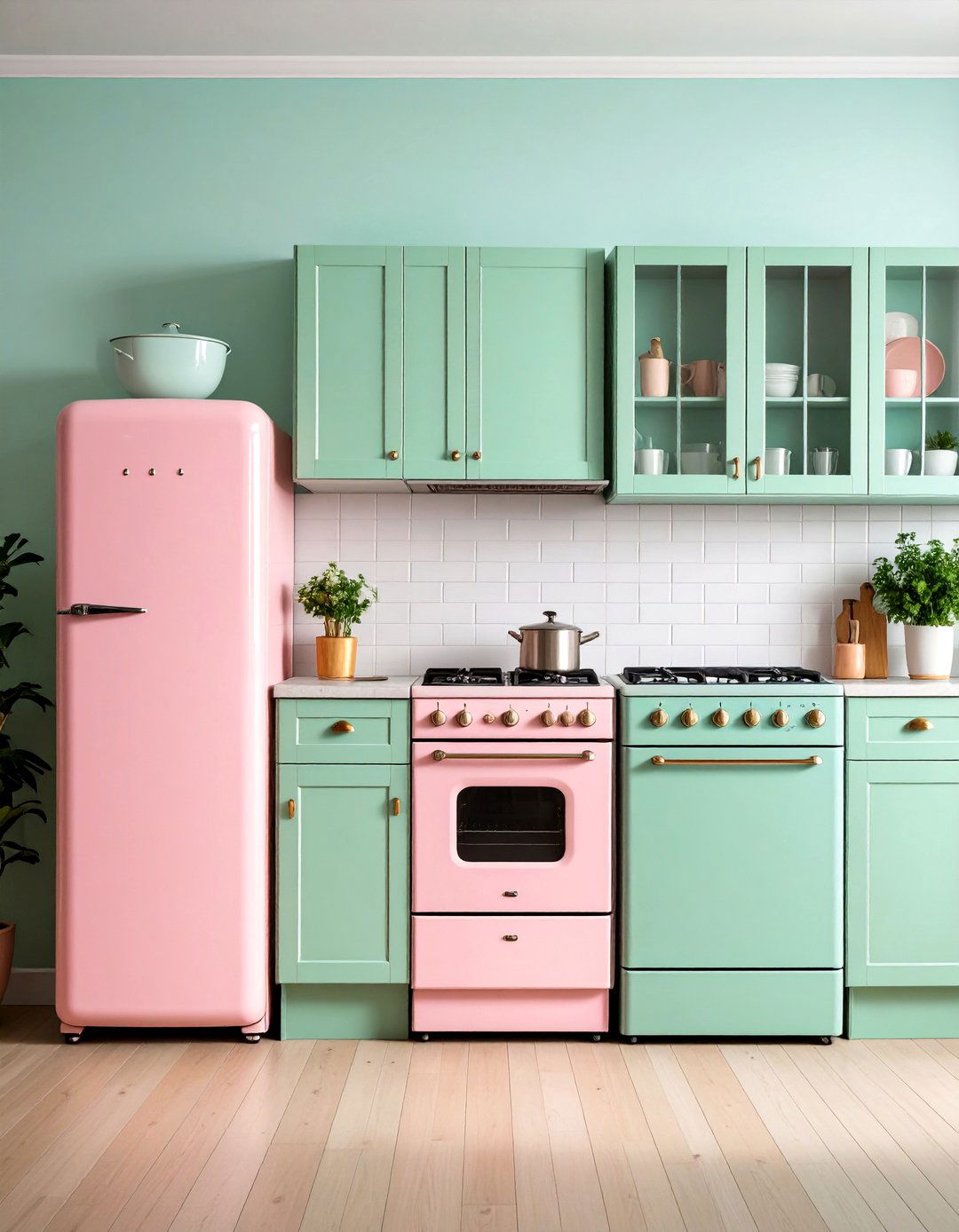
The 1950's saw pastel colors take center stage in almost every house in America, and kitchen appliances followed suit . Transform your kitchen with mint green refrigerators, pink stoves, or turquoise dishwashers that instantly transport you to the golden age of American optimism. Stoves and fridges were outfitted in various light, yet colorful shades, including yellow, green, turquoise, blue, and pink . Modern brands like Smeg and Big Chill offer authentic reproductions that combine vintage aesthetics with contemporary functionality. These appliances become the focal point of your kitchen, creating a cheerful atmosphere that encourages family gatherings and makes everyday cooking feel like a celebration of mid-century style.
2. Classic Black and White Checkerboard Flooring
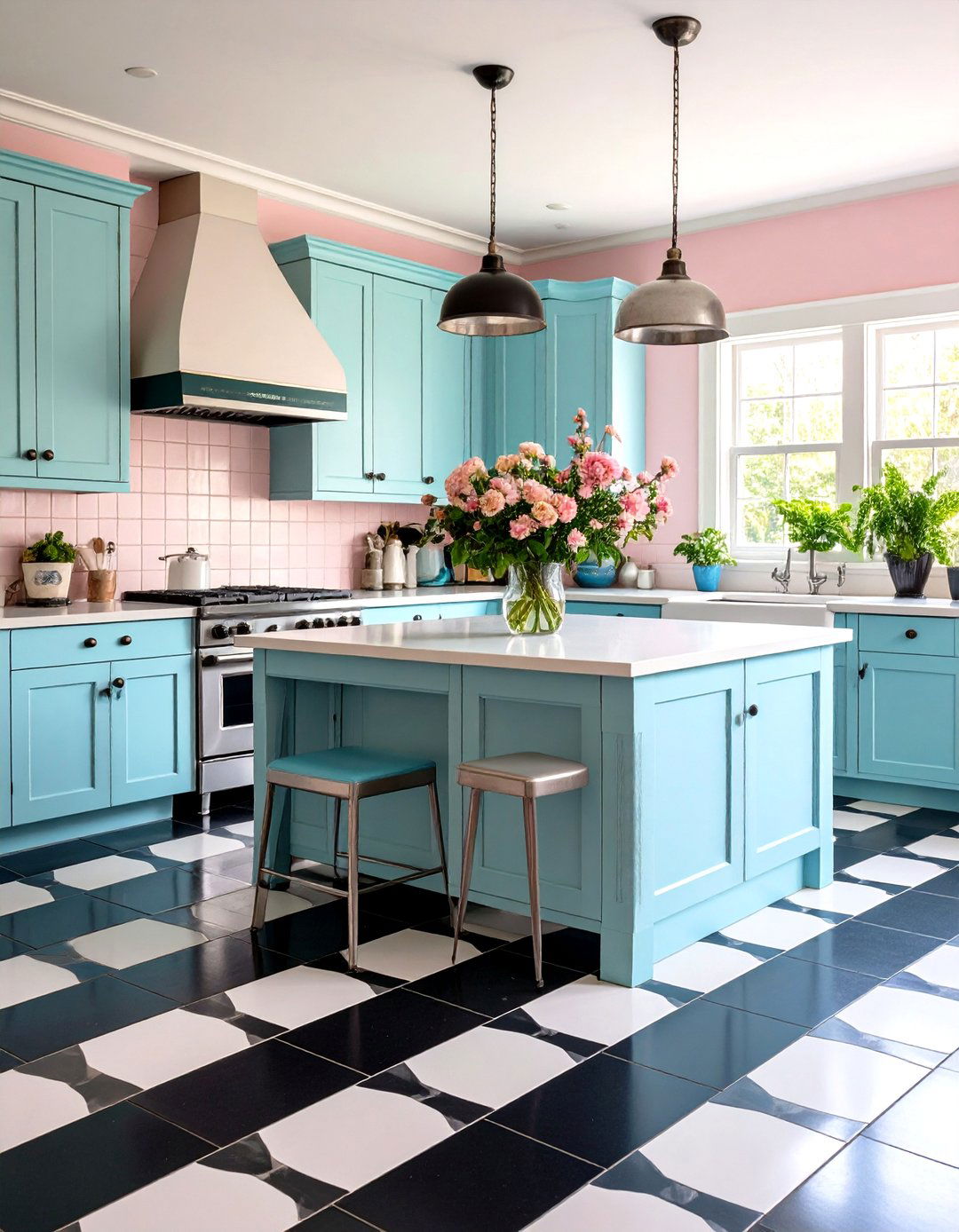
Close your eyes and picture a retro kitchen. What's the first design element that always comes to mind? A checkered floor! This timeless pattern remains the quintessential 1950s kitchen feature, offering both visual impact and practical benefits. The high-contrast design helps to hide dirt and scuffs, making it an ideal choice for busy kitchens . Checkerboard floors are popular in retro kitchens today, but most resilient tiles available are 12″ square, while in mid century America, 9″ square tiles were more common . Choose smaller-scale tiles for authentic period accuracy, and consider this pattern as a neutral base that complements various cabinet colors and vintage accessories while maintaining that classic diner aesthetic.
3. Boomerang Pattern Formica Countertops
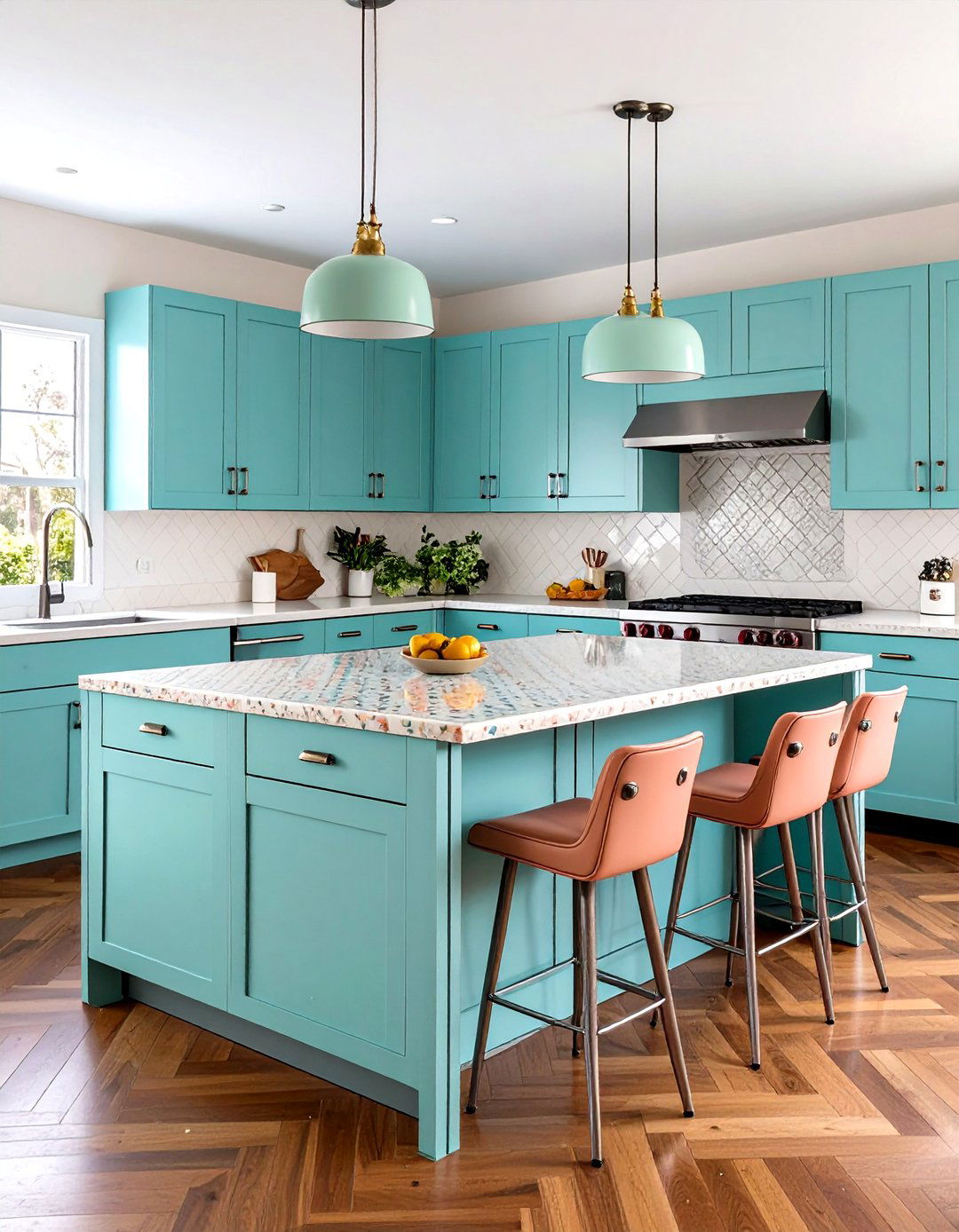
In 1950, industrial designer Brooks Stevens created the Skylark pattern, capturing the buoyant optimism of the period . Originally called Skylark and later renamed Boomerang, this iconic pattern epitomizes 1950s kitchen countertop design. The most popular type among customers is the vintage Formica countertop with boomerang pattern . These atomic-inspired designs feature curved, asymmetrical shapes that add movement and visual interest to your kitchen workspace. Pair boomerang countertops with metal edging in chrome or aluminum for authentic mid-century detailing. The pattern works beautifully with both colorful and neutral cabinet schemes, creating a dynamic surface that celebrates the era's fascination with modern, futuristic design while providing durable, easy-care functionality.
4. Chrome Details and Hardware Throughout
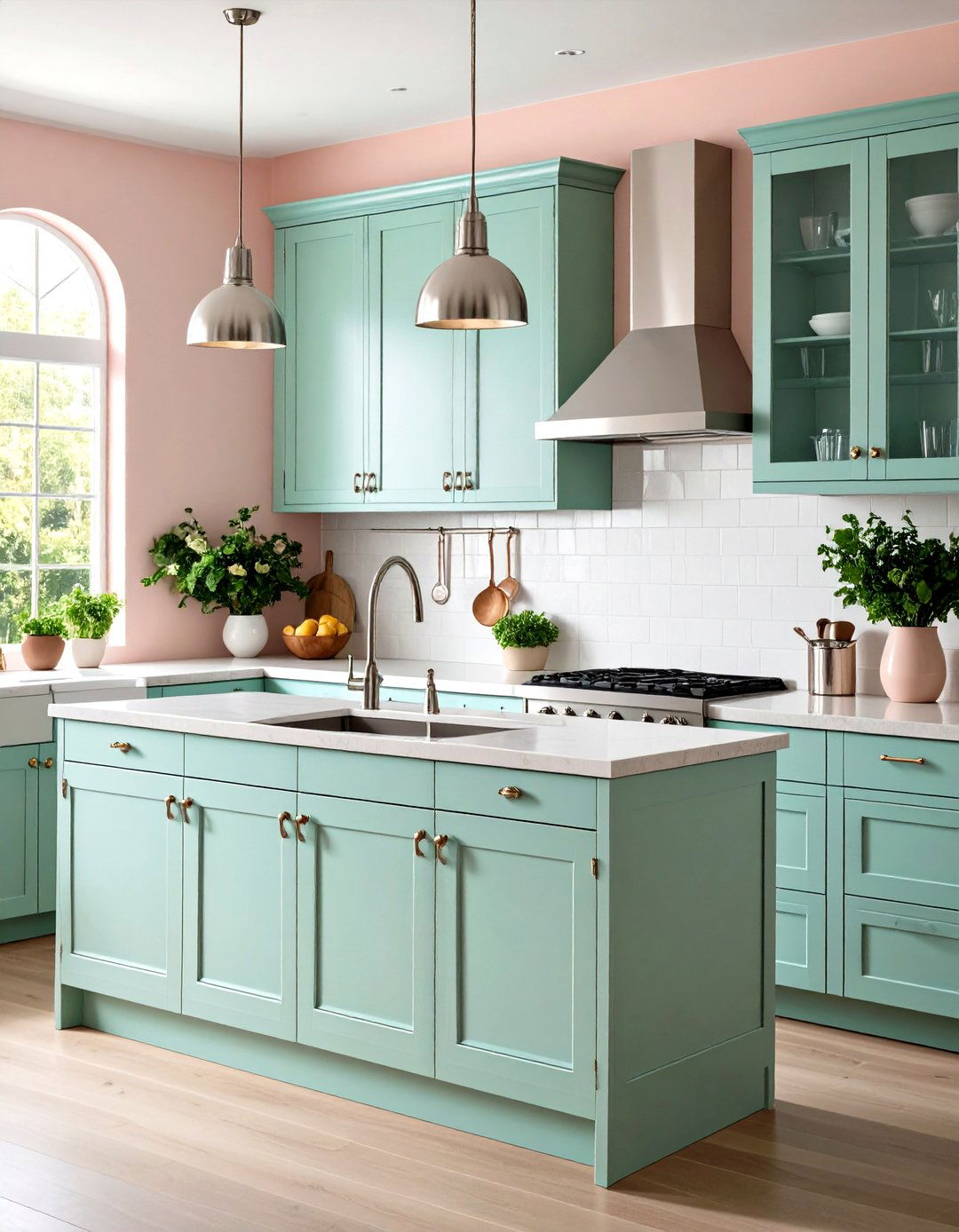
Think of 1950s cars and you can't help but picture chrome—and that gleam could be found in the kitchens of the decade, too . Chrome cabinet pulls, faucets, and appliance trim create the quintessential 1950s kitchen aesthetic. With this futuristic mindset, they sought out ways to create a retro-futurism feel within the space — by using chrome detailing! Install sleek chrome drawer pulls with atomic or boomerang shapes, add chrome-trimmed bar stools, and incorporate chrome-finished small appliances like toasters and mixers. From the '40s until the early '70s, laminate countertops were edged with aluminum or stainless steel . These reflective surfaces bounce light around the kitchen, creating an open, bright atmosphere that embodies the optimistic spirit of the decade.
5. Mamie Pink Kitchen Cabinets

Candy-like shades of color were very trendy in kitchens of the 1950s. Pink was the favorite color of then-First Lady Mamie Eisenhower who wore it often, and it became a popular shade for home decor as well . Embrace this iconic color with soft pink kitchen cabinets that create a warm, welcoming atmosphere. This feminine yet bold choice works beautifully with white or chrome accents and can be balanced with neutral countertops and backsplashes. Consider pairing Mamie pink with mint green accents for an authentic two-tone 1950s color scheme. The key is using the right shade – look for soft, powdery pinks rather than bright magentas to capture the era's sophisticated approach to color in the kitchen.
6. Breakfast Nook Dining Areas
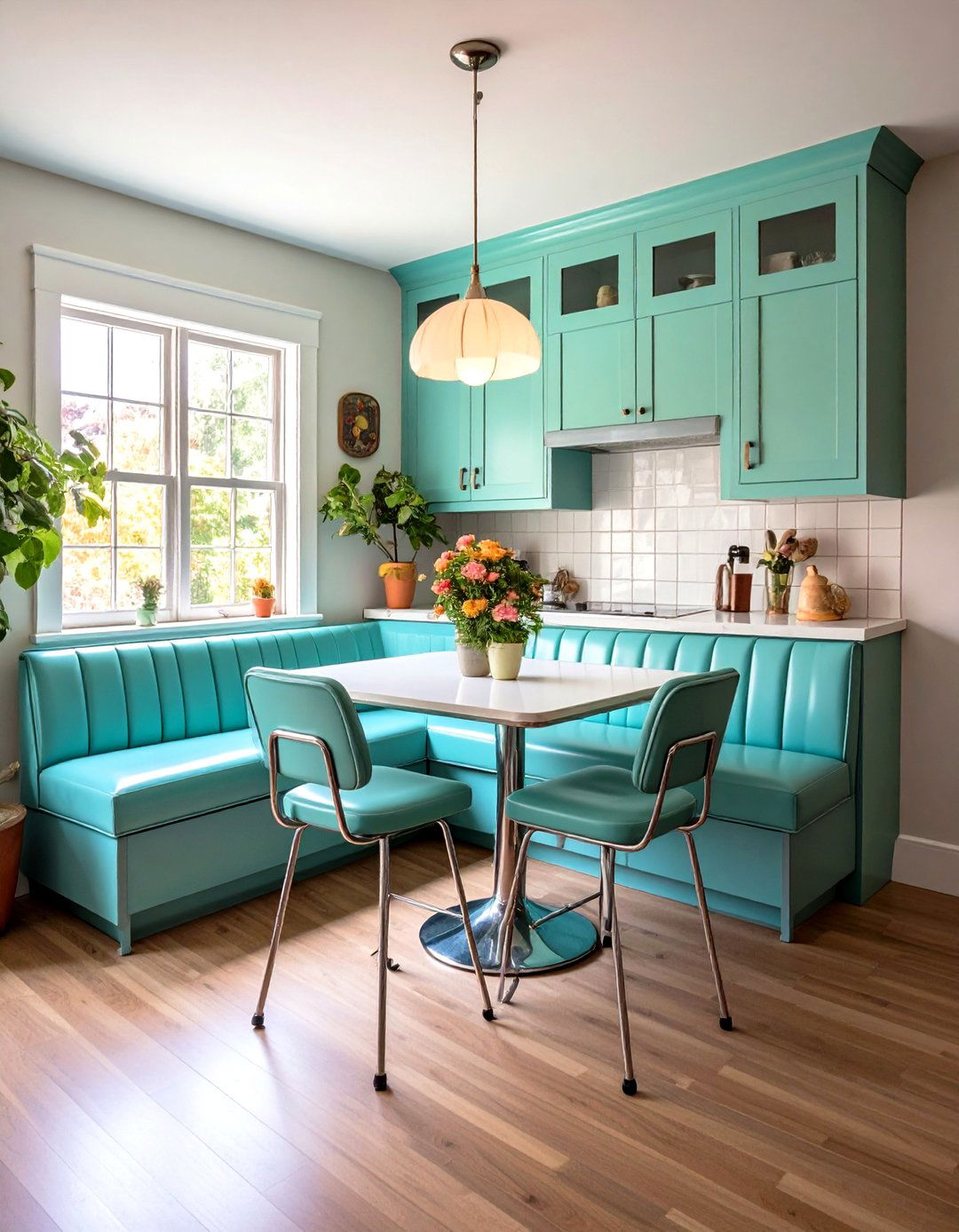
Most kitchens offered this same eat-in vibe you'd find in local diners, offering a breakfast nook where the family could gather for meals . Create a cozy breakfast nook with a built-in banquette featuring vinyl upholstery in period-appropriate colors like turquoise or cherry red. A breakfast nook also allows you to make use of the space in the most efficient way possible and keeps those working in the kitchen engaged with what the family is doing . Add a chrome-legged table with a Formica top and complete the look with matching chrome bar stools. This setup encourages family interaction while maximizing kitchen space efficiency. The breakfast nook becomes a focal point for casual dining, homework sessions, and social gatherings, embodying the 1950s emphasis on family-centered living.
7. Atomic Starburst Design Elements

The atomic age fascination of the 1950s brought starburst patterns into kitchen design, creating dramatic focal points that celebrate the era's optimism about science and the future. The atomic starburst pattern, iconic in mid-century modern design, can make for an eye-catching kitchen floor . Incorporate these dynamic patterns through floor tiles, backsplash designs, or even light fixtures. This design works particularly well with solid-color cabinets, allowing the floor to be the star of the show . Starburst patterns add energy and movement to your kitchen while serving as conversation pieces. Consider using this motif sparingly – perhaps as a backsplash accent or in a single design element – to avoid overwhelming the space while still capturing the atomic age spirit.
8. Turquoise Blue Kitchen Accents
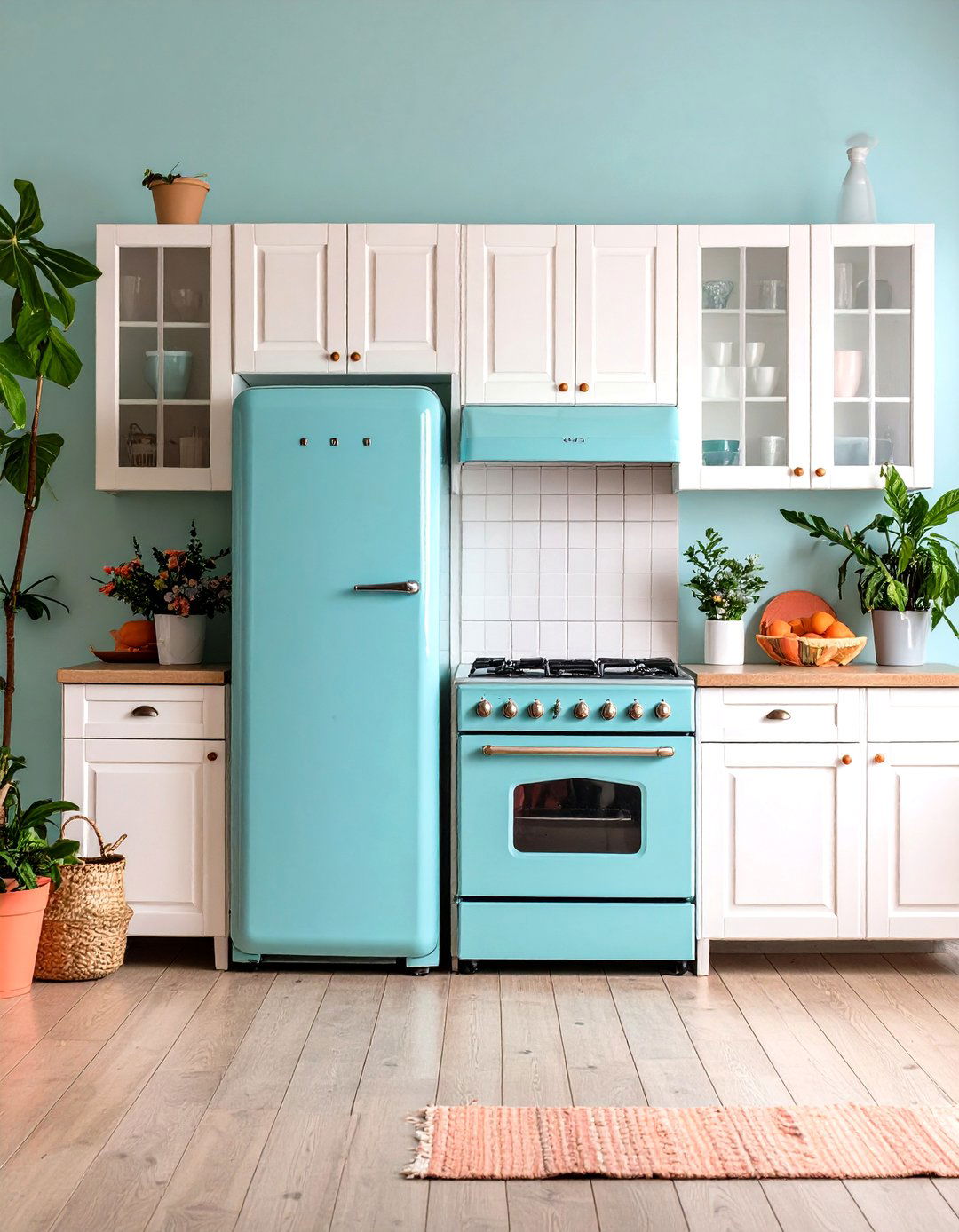
It seems weird to us to covet a turquoise blue kitchen, but that was truly high style in the 1950s . This vibrant blue-green shade brings oceanic freshness to 1950s kitchens and works beautifully as either a primary color or accent tone. Turquoise: This lively shade was a favorite. Turquoise refrigerators and stoves brought a fun, retro vibe to kitchens . Use turquoise for cabinet colors, appliances, or backsplash tiles to create a space that feels both energetic and calming. This color pairs exceptionally well with white, cream, or coral pink accents. Consider turquoise bar stools, small appliances, or vintage-inspired accessories to add pops of this quintessential 1950s color throughout your kitchen without overwhelming the space.
9. Diner-Style Red and White Color Schemes

Transport your kitchen to the 1950s with a classic diner-style red and white floor. This bold color combination is not only visually striking but also practical, as it can hide spills effectively . Channel authentic American diner aesthetics with cherry red appliances, white cabinets, and chrome accents throughout. Red is one of the most popular options for colored appliances in retro kitchens . This high-energy color combination creates a cheerful, welcoming atmosphere that encourages social interaction and family gatherings. Pair this flooring with chrome accents and retro appliances to complete the authentic diner look . Add red vinyl bar stools, white subway tile backsplashes, and chrome-finished hardware to complete this timeless American kitchen theme.
10. Mint Green Kitchen Cabinetry
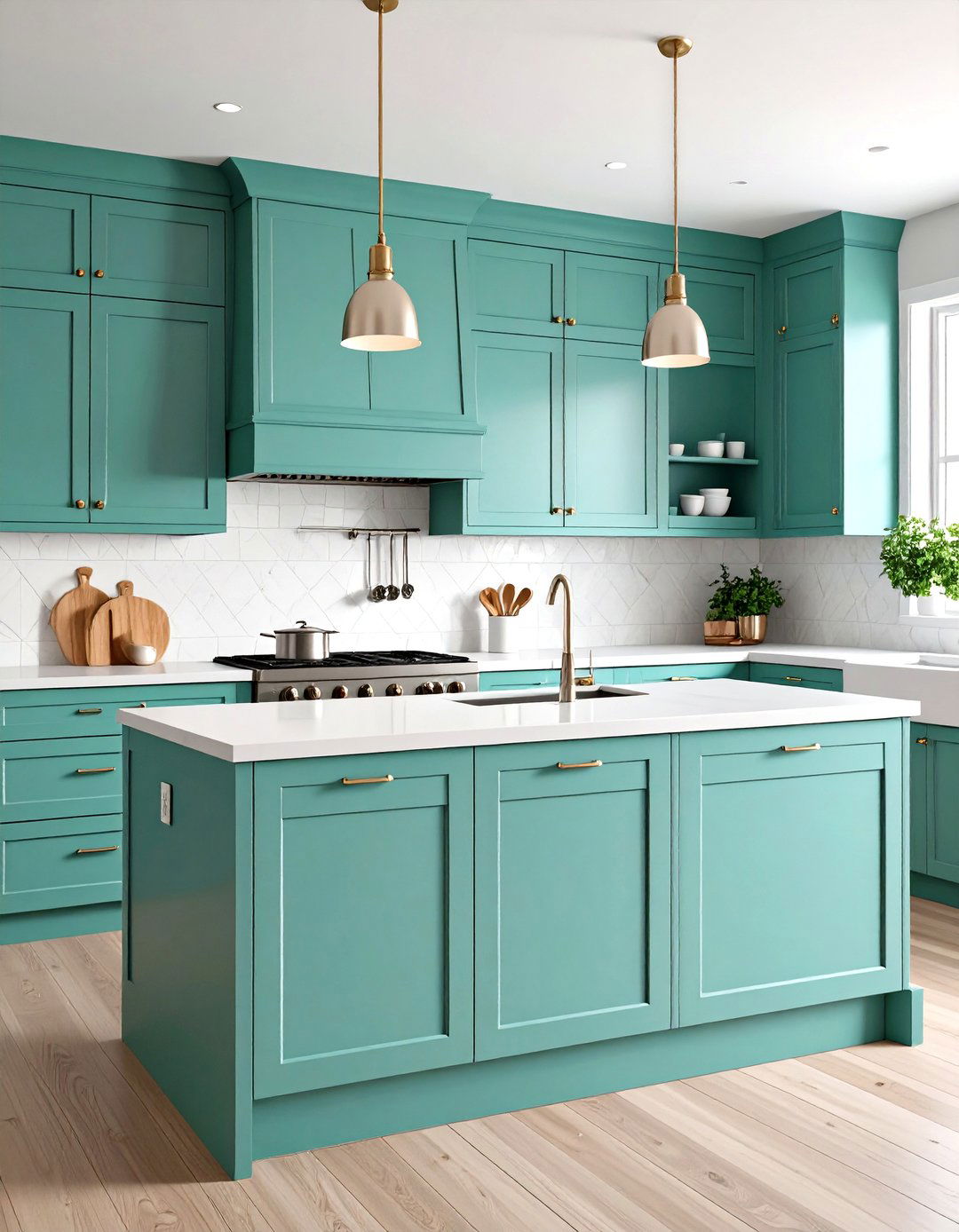
Mint green made its way into 50s design through peppermint candy in bowls, jade jewellery, and pastel-green tiles . This refreshing color choice creates a sophisticated yet playful kitchen atmosphere that embodies 1950s optimism. Lime green slab-front retro kitchen cabinets brighten rooms filled with clean lines and natural light . Mint green cabinetry works beautifully with white countertops, chrome hardware, and coral or pink accent colors. This color choice creates a sense of tranquility while maintaining the period's characteristic cheerfulness. Consider pairing mint green lower cabinets with white upper cabinets for a balanced, airy feel, or use mint green as an accent color on a kitchen island to add personality without overwhelming the space.
11. Vintage-Style Linoleum Flooring Patterns
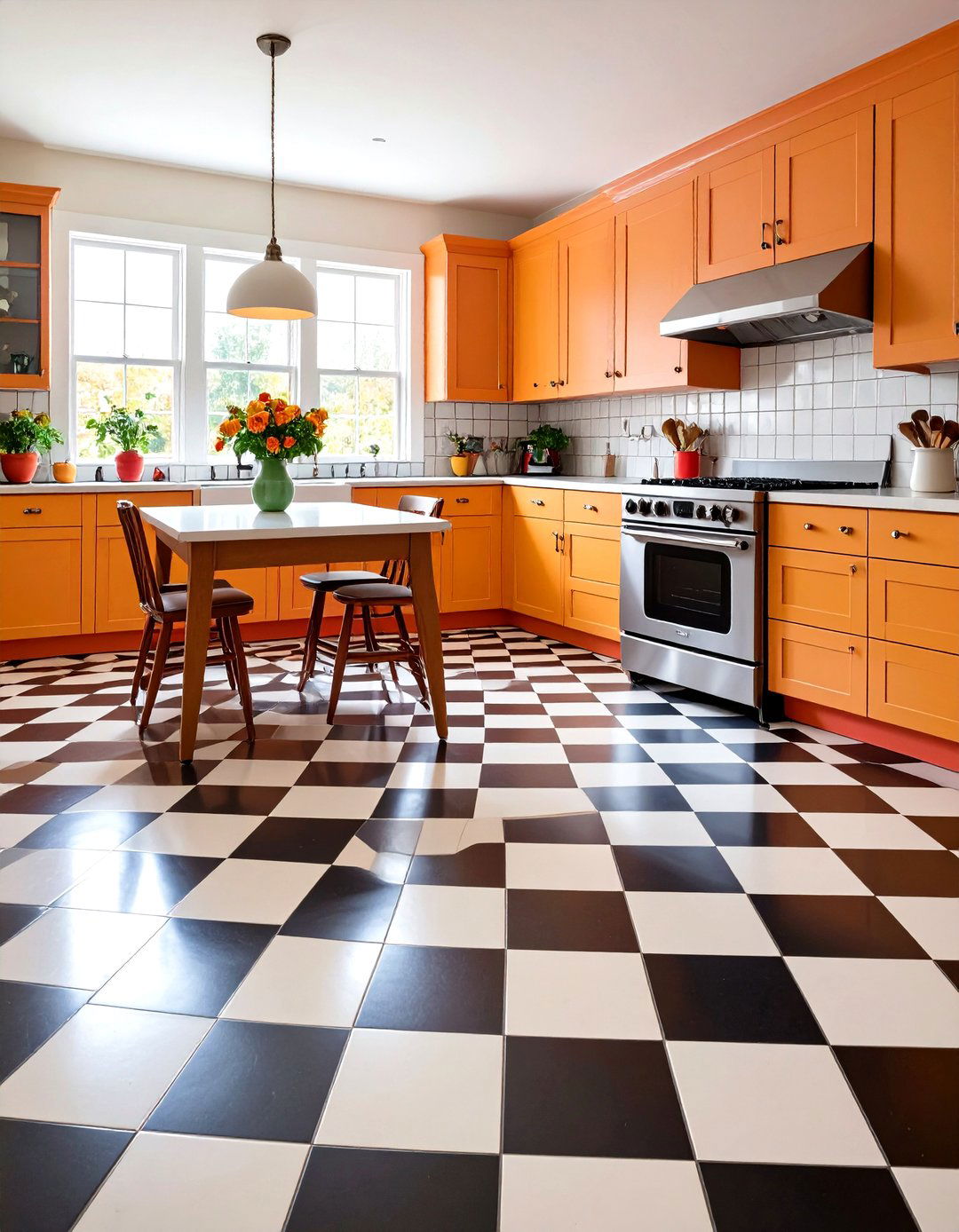
Linoleum flooring, with its vibrant patterns and colors, is experiencing a resurgence in popularity. This material offers durability and affordability, making it an excellent choice for those wanting to achieve a retro look on a budget . Bold stripes, oversize checkerboard squares, or random arrangements made from vinyl tile or linoleum defined 1950s flooring . Modern linoleum offers authentic vintage patterns including boomerang designs, atomic motifs, and geometric arrangements that capture the era's innovative spirit. A practical feature is a pattern that goes all the way through to the backing, so that heavy traffic spots always match the rest of the floor . Choose patterns that complement your overall color scheme while adding visual interest and period authenticity to your kitchen renovation.
12. Open Shelving with Colorful Displays
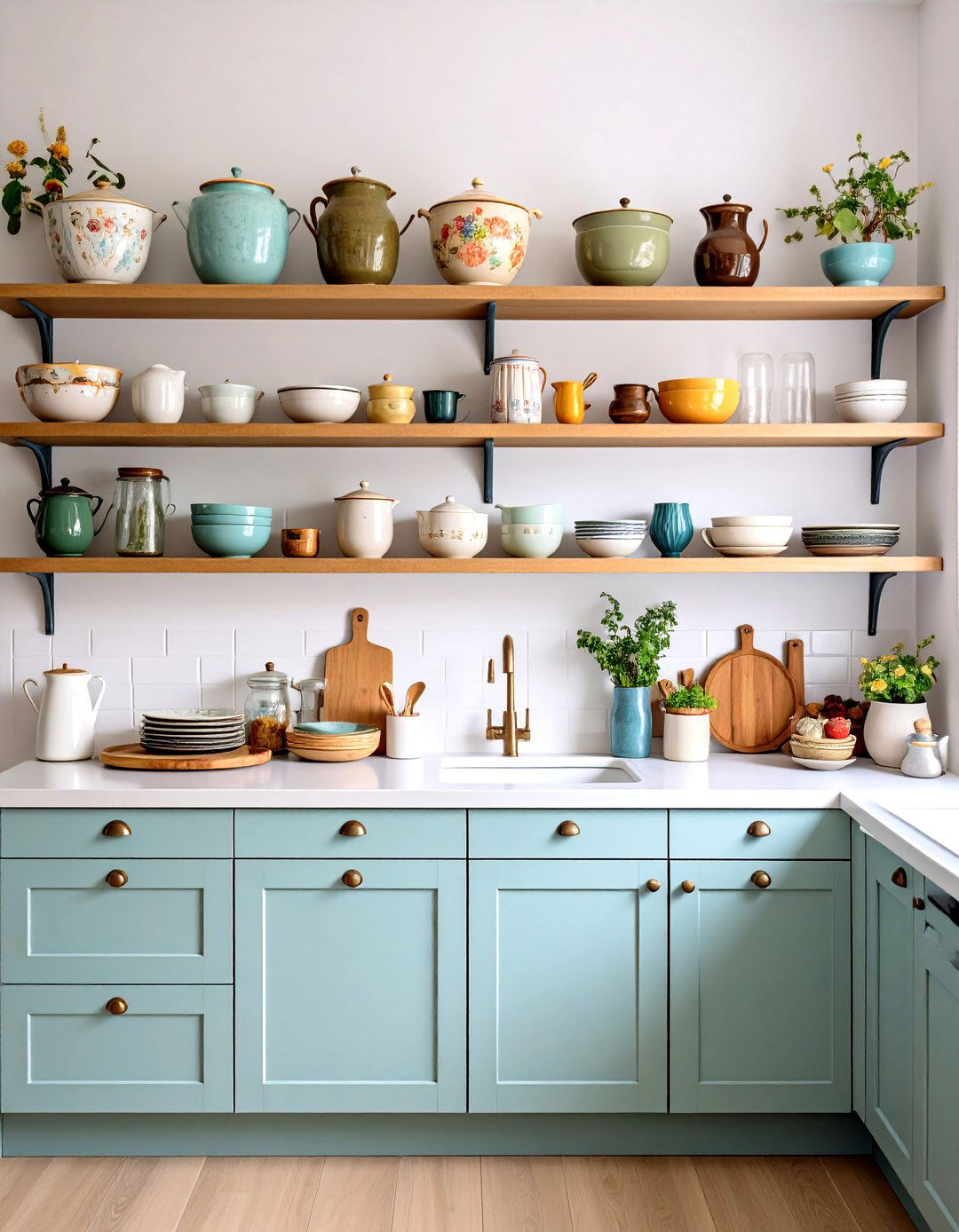
Open shelves and glass-front cabinets make the perfect stage for displaying vintage kitchen decor or other collector's items . Replace some upper cabinets with open shelving to showcase colorful Pyrex bowls, vintage canisters, and period-appropriate dishware. This approach creates visual lightness while providing practical storage and display opportunities. Open shelving, classic signage, and pops of chrome round out the look—bringing just the right amount of nostalgia . Arrange your display items by color or theme to create cohesive vignettes that enhance your kitchen's 1950s aesthetic. Consider adding small spotlights or under-cabinet lighting to highlight your vintage collection and create warm, inviting ambiance throughout the space.
13. Yellow Kitchen Accents and Appliances
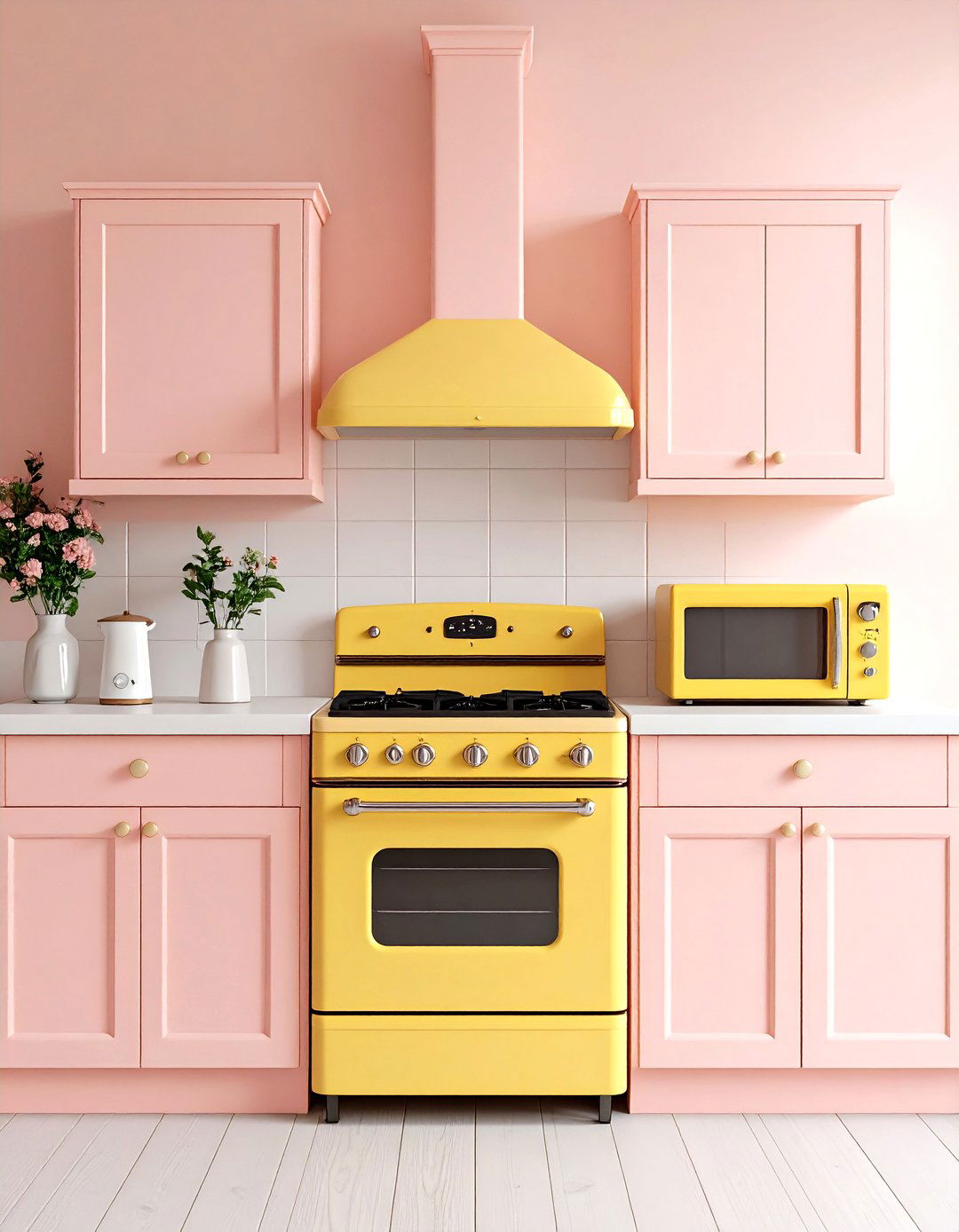
Colors in the "Good Ol' Days" ranged from Cherry Red, Canary Yellow, Turquoise Green, Petal Pink and Woodtone Brown in the 1950's . Sunny yellow brings warmth and cheerfulness to 1950s kitchen design, working beautifully as both a primary color and accent tone. A pastel yellow stove is a very simple element that you can make a part of your existing kitchen and channel the era . Yellow will brighten up the room and make it feel refreshing, dynamic, like it's pulsing with life! The 1950s look is supposed to feel lively, colorful and fun! Consider buttercup yellow small appliances, cabinet accents, or backsplash tiles to add this optimistic color to your kitchen while maintaining sophisticated style.
14. Terrazzo Countertops and Flooring
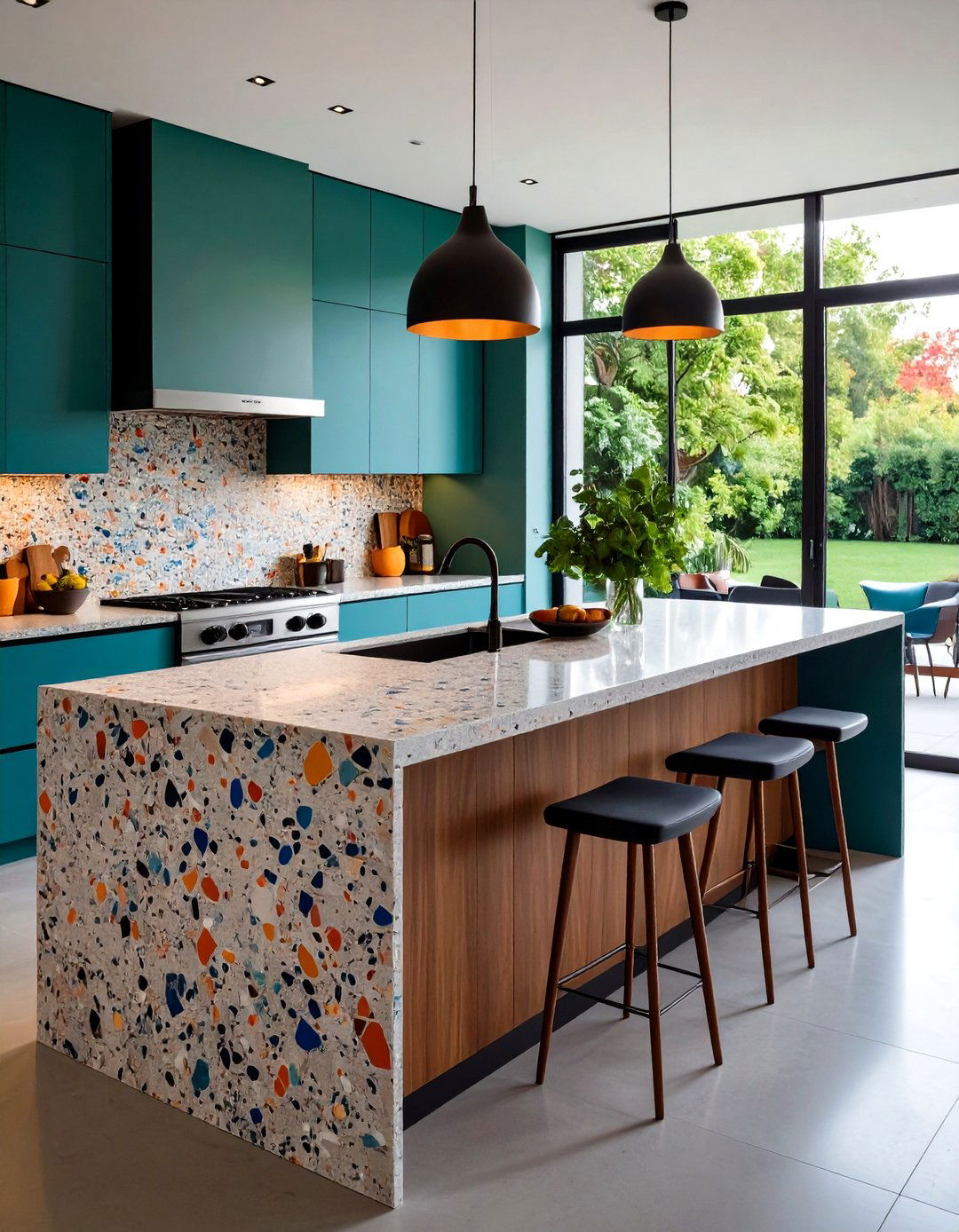
Terrazzo, a composite material consisting of chips of marble, quartz, granite, or glass set in polished cement, is making a strong comeback . This durable, distinctive material was popular in 1950s commercial spaces and high-end residential kitchens. Terrazzo offers unique visual appeal with its speckled appearance and comes in various color combinations that complement vintage color schemes. The material's durability makes it ideal for busy kitchen environments, while its distinctive appearance adds sophisticated texture and pattern to your space. Modern terrazzo options include recycled materials and contemporary color combinations that bridge vintage aesthetics with current sustainability concerns, making it an excellent choice for environmentally conscious homeowners seeking authentic 1950s style.
15. Kidney-Shaped Kitchen Islands
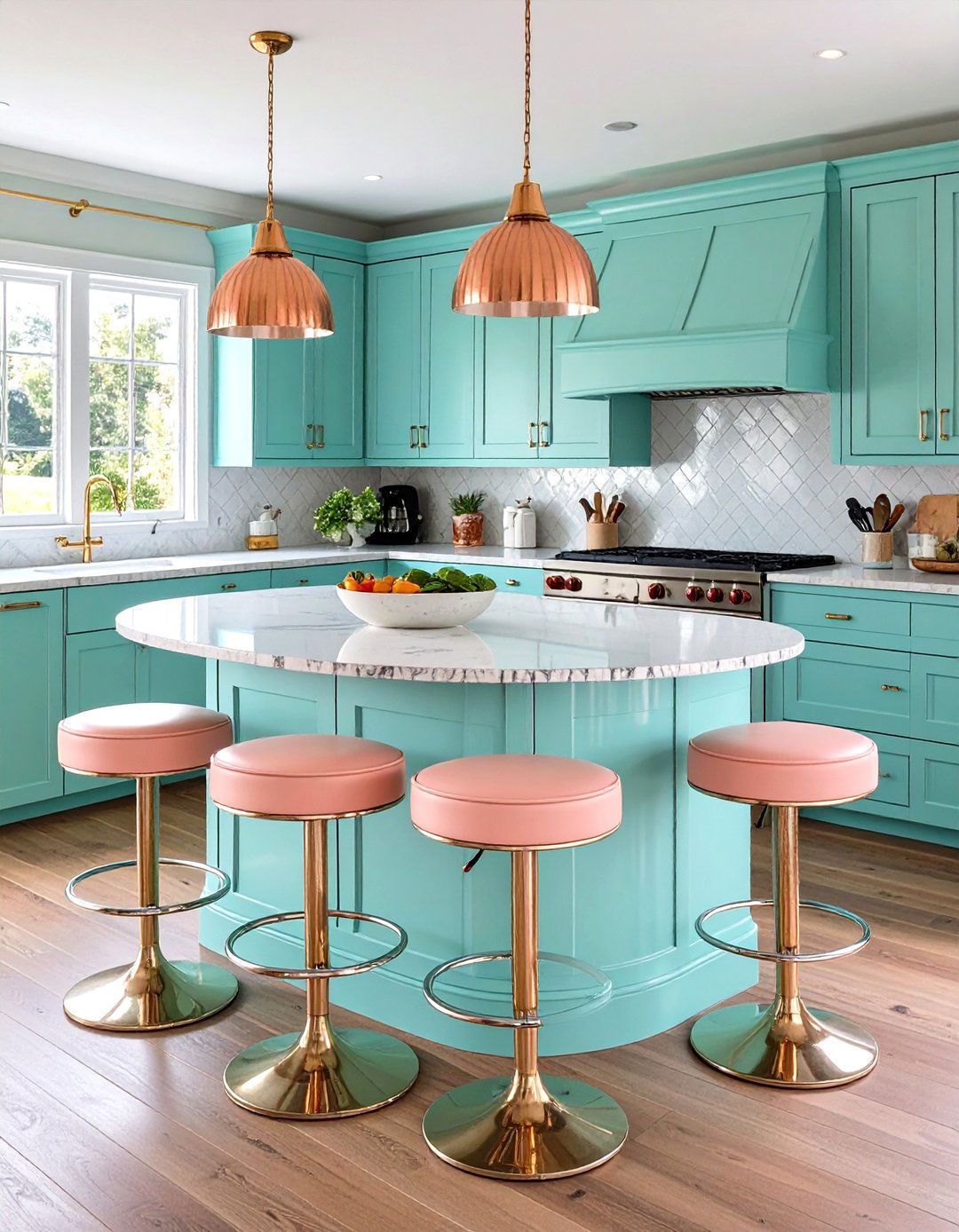
This raised kidney-shaped kitchen bar is a classic gathering spot where families can prep food together and have informal meals . The curved, organic shape was characteristic of 1950s furniture design and brings softness to kitchen layouts dominated by straight lines. When paired with stools, the bar reflects a diner look . A kidney-shaped island provides efficient workspace while encouraging social interaction and family participation in meal preparation. This design element works particularly well in open-plan kitchens, creating natural traffic flow while maintaining the period's emphasis on family-centered living. Consider topping your kidney-shaped island with vintage-appropriate materials like Formica or terrazzo, and surround it with chrome-legged bar stools for authentic 1950s styling.
16. Cracked Ice Formica Patterns
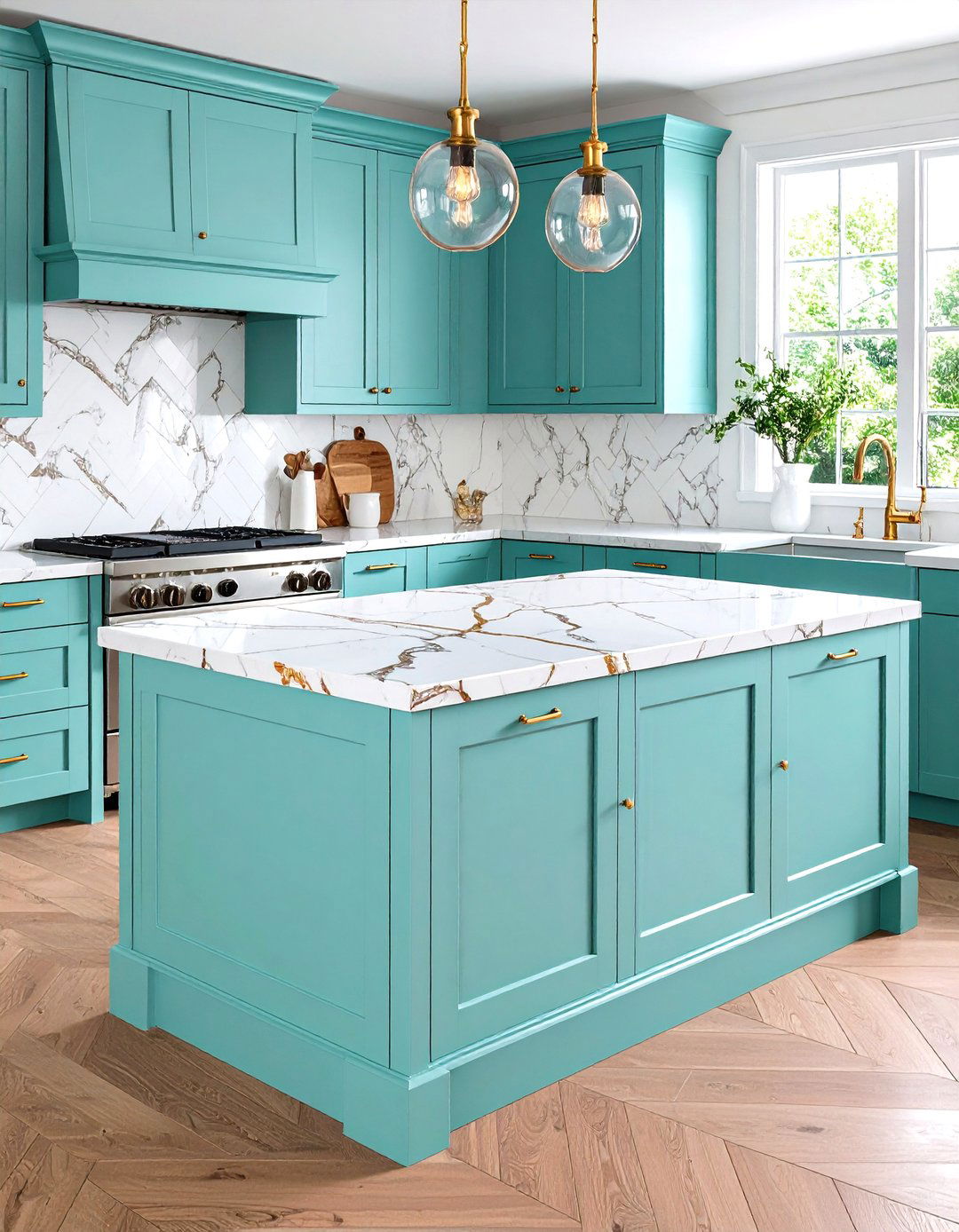
The cracked ice laminate pattern was among the earliest offered when laminate was first invented for countertop use . This sophisticated pattern features abstract, crystalline designs that add elegant texture to kitchen surfaces. This is an "abstract" design that was super popular in kitchens and on dinettes . If you are interested in historical authenticity, this laminate design is a good one for kitchens from about 1938 to 1953 . Cracked ice patterns work beautifully with both colorful and neutral kitchen schemes, providing sophisticated visual interest without overwhelming other design elements. The pattern's subtle complexity makes it an excellent choice for homeowners who want authentic 1950s style with timeless appeal that won't feel dated in future decades.
17. Chrome Bar Stools and Seating
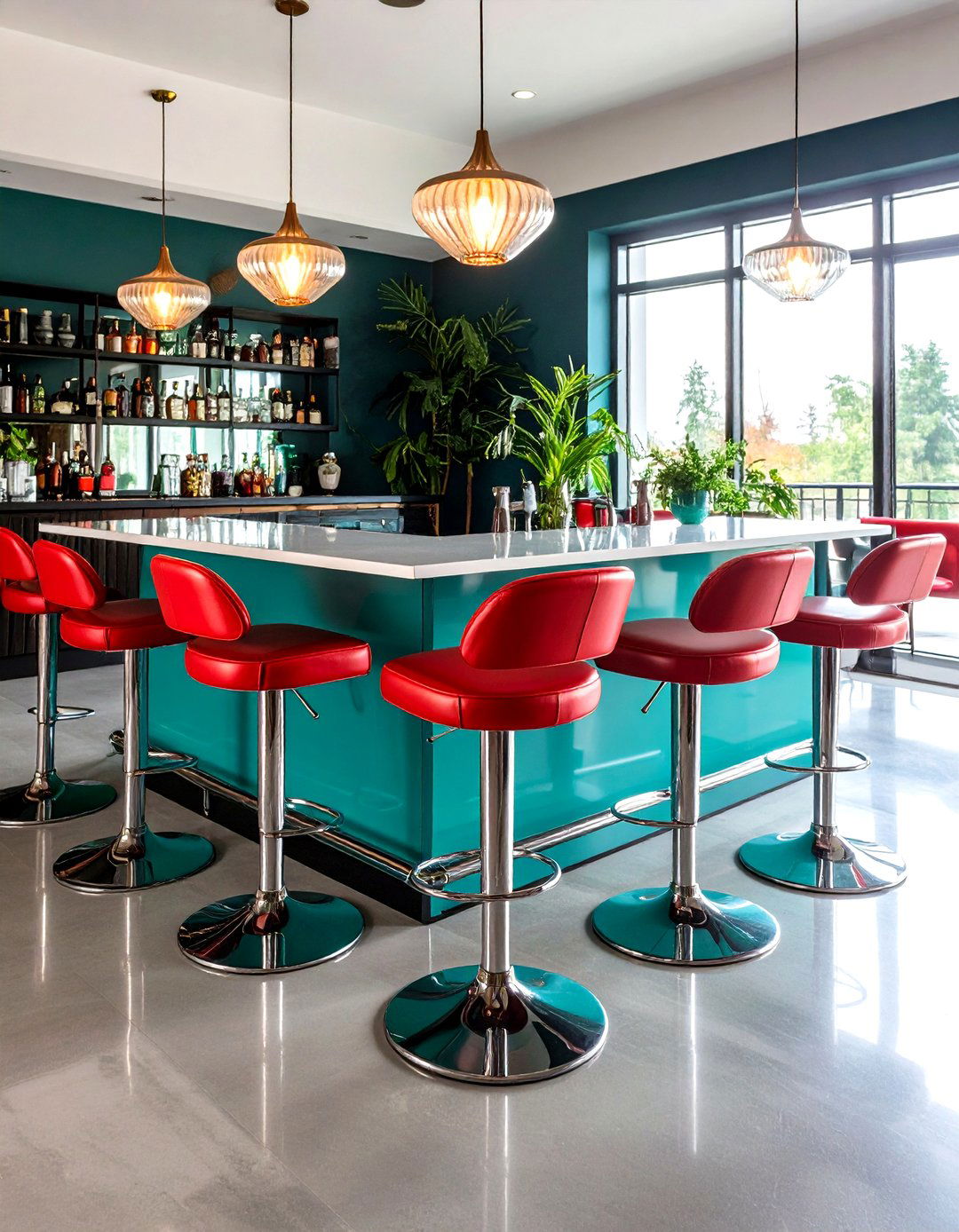
These barstools, trimmed with a metal band and a thin line of red fabric, are reproductions of seating options reminiscent of those found in 1950s soda shops . Chrome bar stools with vinyl upholstery create authentic diner-style seating that complements breakfast nooks and kitchen islands. Choose stools with swivel mechanisms and adjustable heights for maximum functionality and period accuracy. Industrial stools and white cabinetry keep things fresh and balanced . Select upholstery colors that coordinate with your overall kitchen palette – classic choices include red, turquoise, yellow, or black and white combinations. The reflective chrome finish adds brightness to your kitchen while the comfortable seating encourages family interaction and casual dining experiences that defined 1950s lifestyle.
18. Mosaic Tile Backsplashes
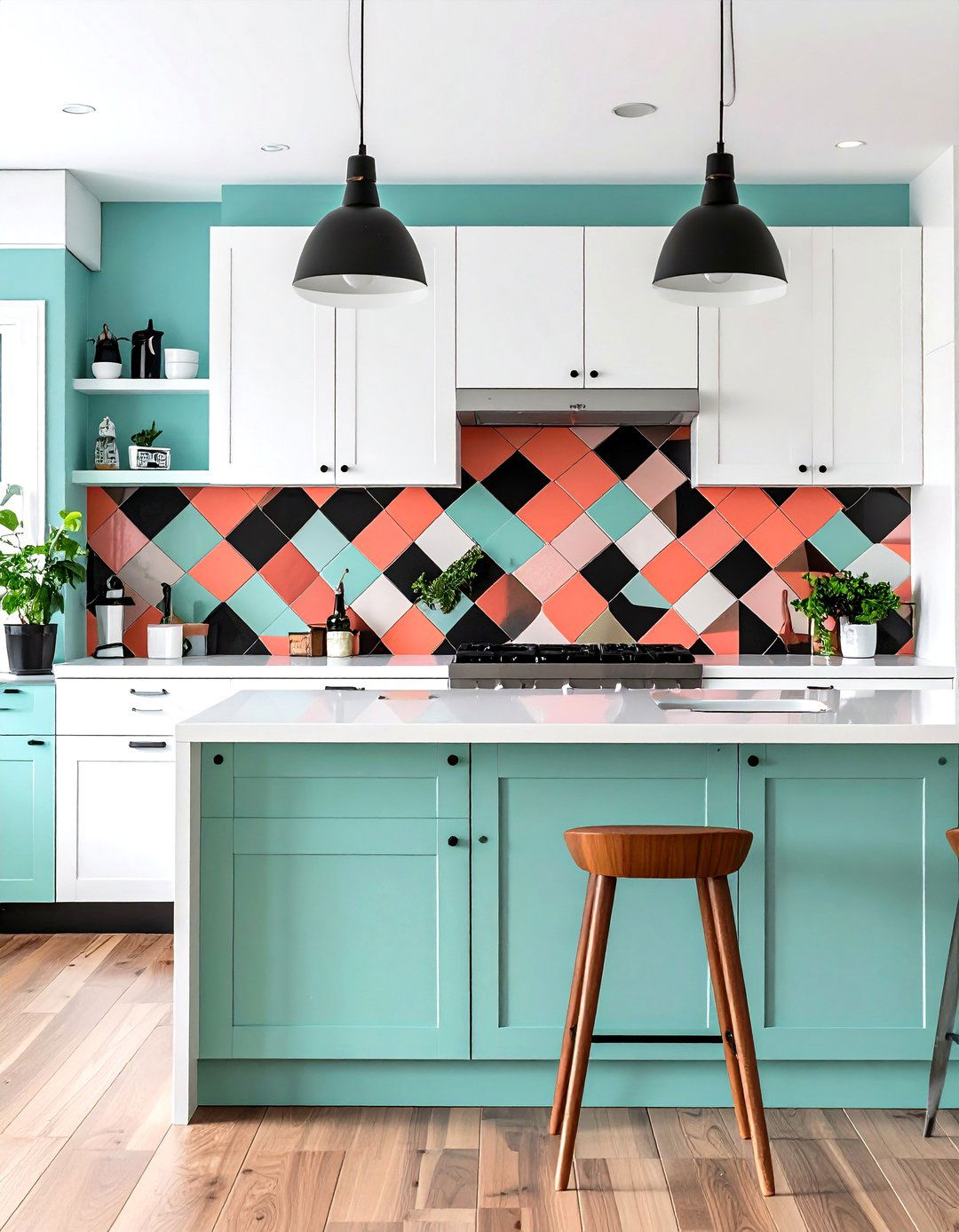
Mosaic tiles offer endless possibilities for creating custom designs that capture the essence of 1950s style. From abstract patterns to pictorial scenes, mosaics allow you to express your creativity . Turquoise glass mosaic tiles installed floor to ceiling set off a bright, modern-retro kitchen design . Create stunning focal points with small-scale tiles in period-appropriate colors like mint green, coral pink, or classic black and white. The small tiles also provide excellent slip resistance, combining safety with style . Consider geometric patterns, atomic motifs, or simple color blocking to achieve authentic 1950s styling. Mosaic backsplashes add texture and visual interest while protecting walls from cooking splashes, making them both beautiful and practical additions to your vintage-inspired kitchen.
19. Colorful Small Appliances and Accessories
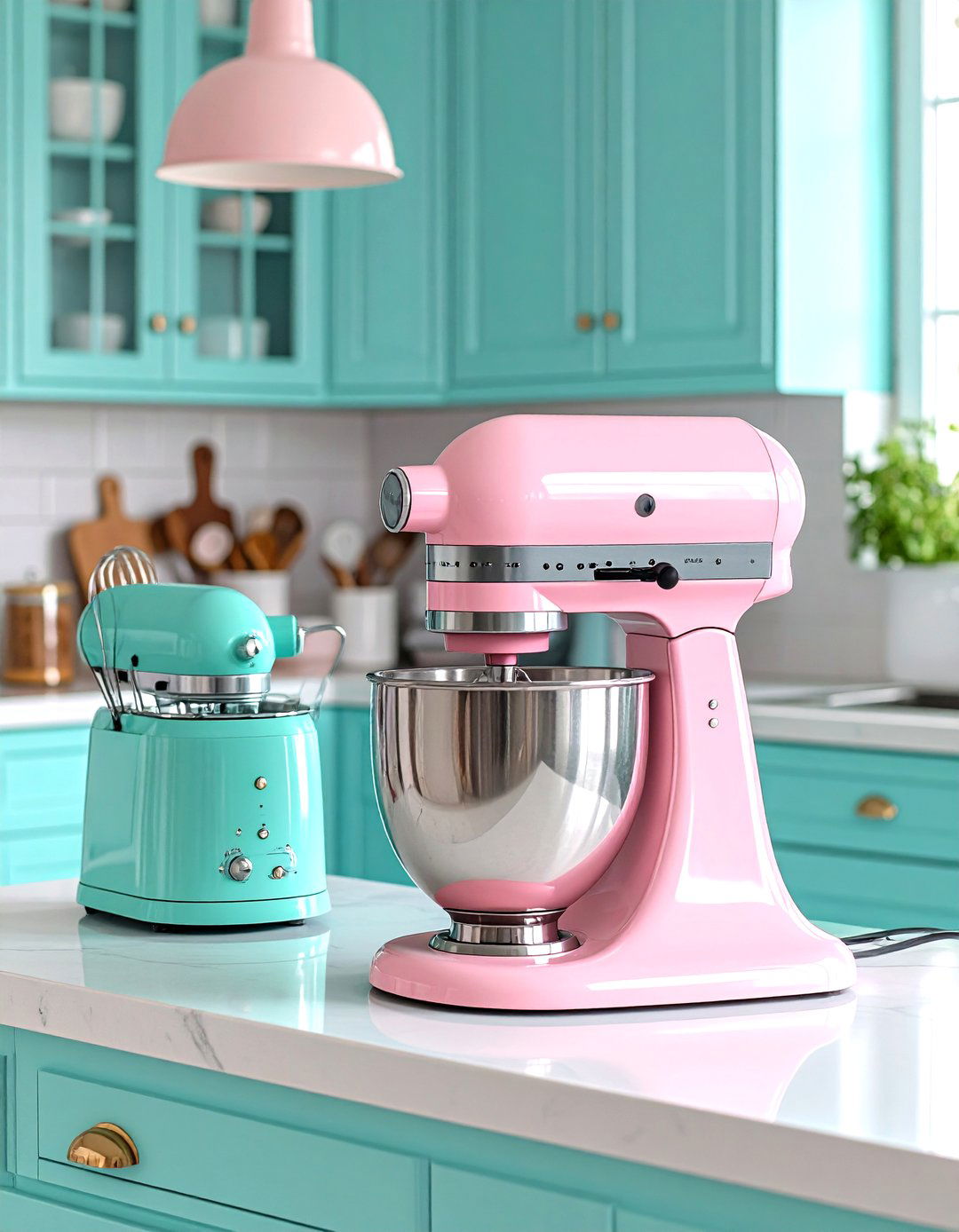
Pastel kitchen appliances are also a fun throwback, especially when showcased with electric whisks, standalone mixers, and baking equipment . Transform your kitchen with period-appropriate small appliances in signature 1950s colors like pink KitchenAid mixers, turquoise toasters, or mint green blenders. The Bella company makes cooking/kitchen appliances in excellent colors with a vintage-feel . These colorful accessories instantly add personality and vintage charm without requiring major renovations. Group similar colors together on open shelving or countertops to create cohesive color stories throughout your kitchen. Accessories, including colorful cookware and an antique collectible soda siphon, infuse the cheery space with personality . Choose functional pieces that you'll use regularly to maintain the lived-in authenticity that made 1950s kitchens so welcoming.
20. Vintage-Inspired Lighting Fixtures
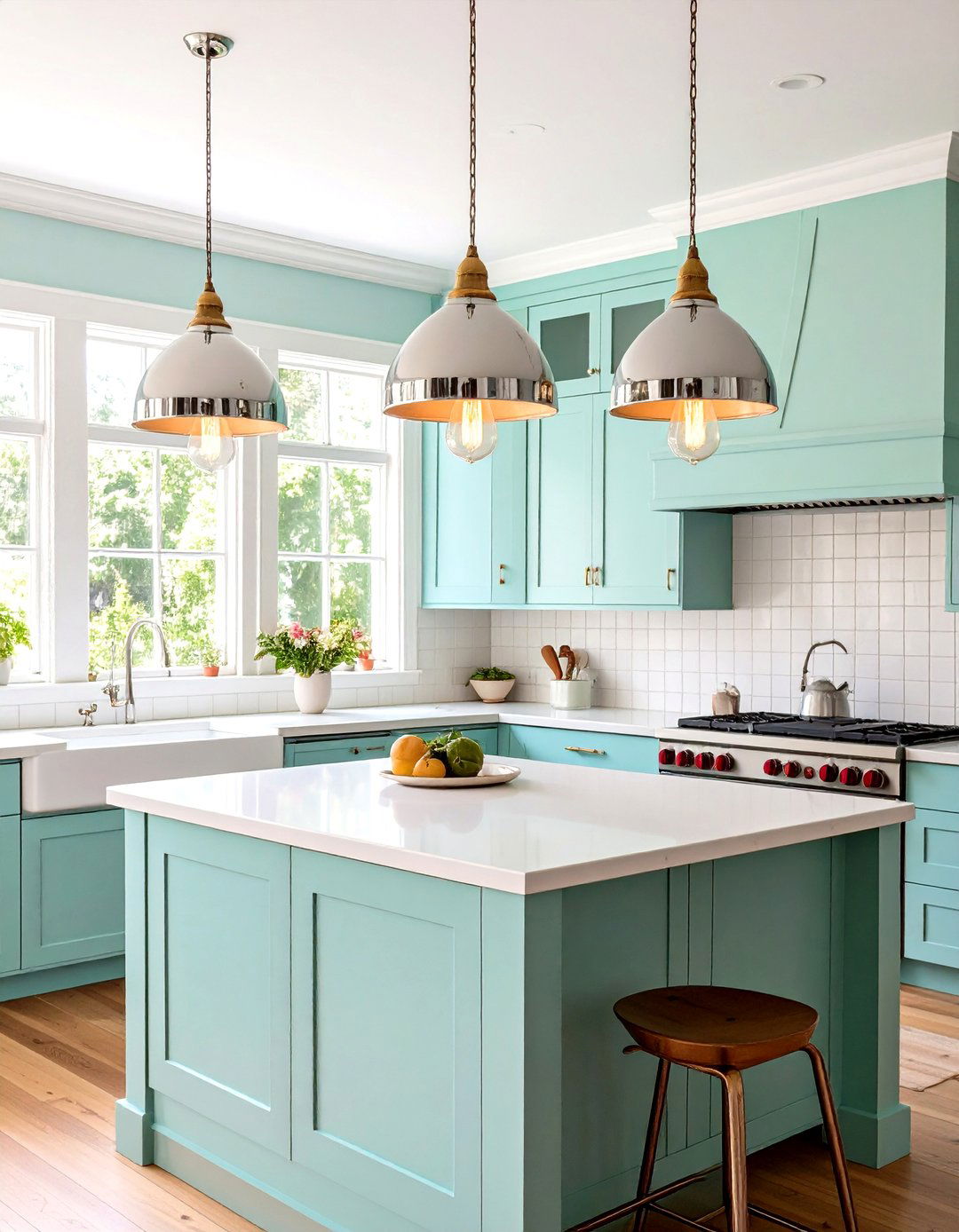
Lighting design was just as bold as everything else in the era, so choose low hanging dome shades, placed over the centre of the room . Install pendant lights with atomic-inspired designs, sputnik chandeliers, or classic dome shades that capture the era's futuristic optimism. This traditional schoolhouse shade is an exact replica of a type used up into the 1950s . A trio of teardrop pendant lights boosts the room's style quotient . Consider under-cabinet lighting to illuminate work surfaces and highlight vintage accessories or colorful backsplashes. The right lighting enhances your kitchen's color scheme while providing functional illumination for cooking and entertaining. Choose fixtures in chrome, copper, or colorful finishes that complement your overall design scheme and celebrate the decade's bold approach to both form and function.
Conclusion:
The enduring appeal of 1950s kitchen design lies in its perfect balance of optimism, functionality, and bold style that continues to inspire modern homeowners. When designing a kitchen, you want to piece together various design elements that will stand the test of time . These vintage elements – from pastel appliances and boomerang countertops to chrome details and checkerboard floors – create kitchens that feel both nostalgic and surprisingly contemporary. Don't be afraid to play around with style! Do what inspires you and makes you happy, while remembering that there's always room for 1950's charm in some element or another . Whether you incorporate just a few accent pieces or commit to a full retro renovation, these timeless design ideas prove that good style never goes out of fashion. The key is choosing elements that speak to your personal taste while honoring the era's spirit of innovation, family-centered living, and unabashed celebration of color and personality in the heart of the home.


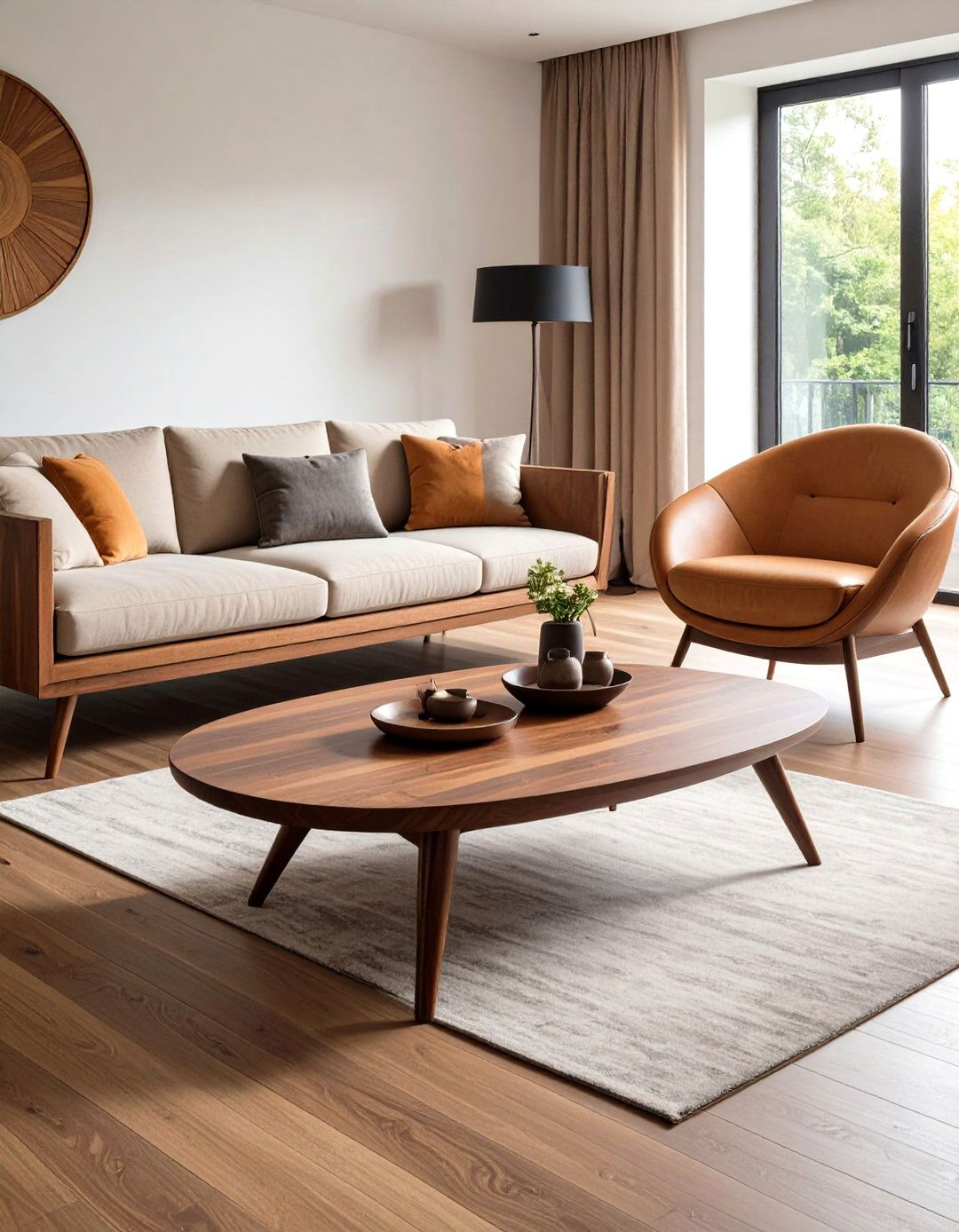
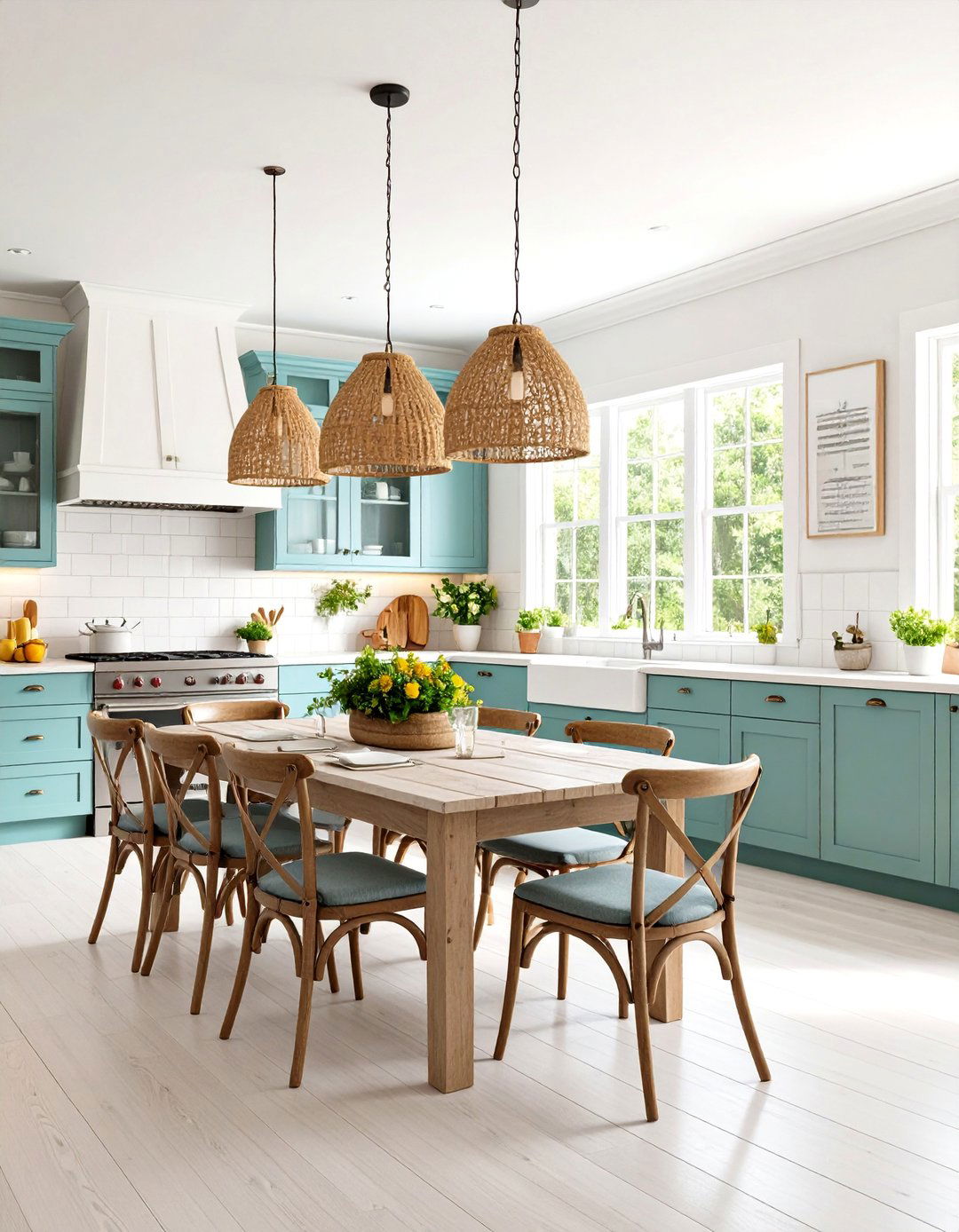
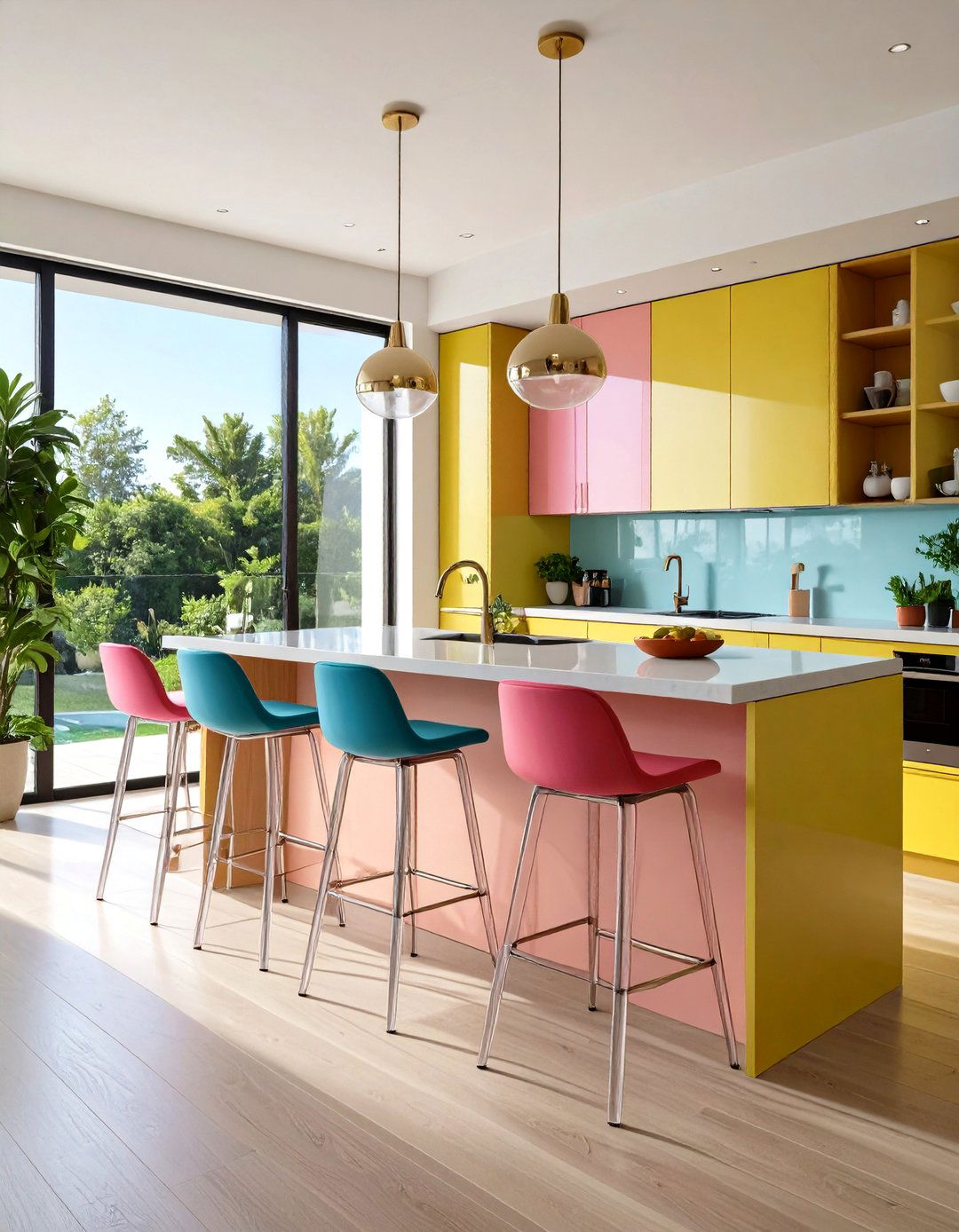
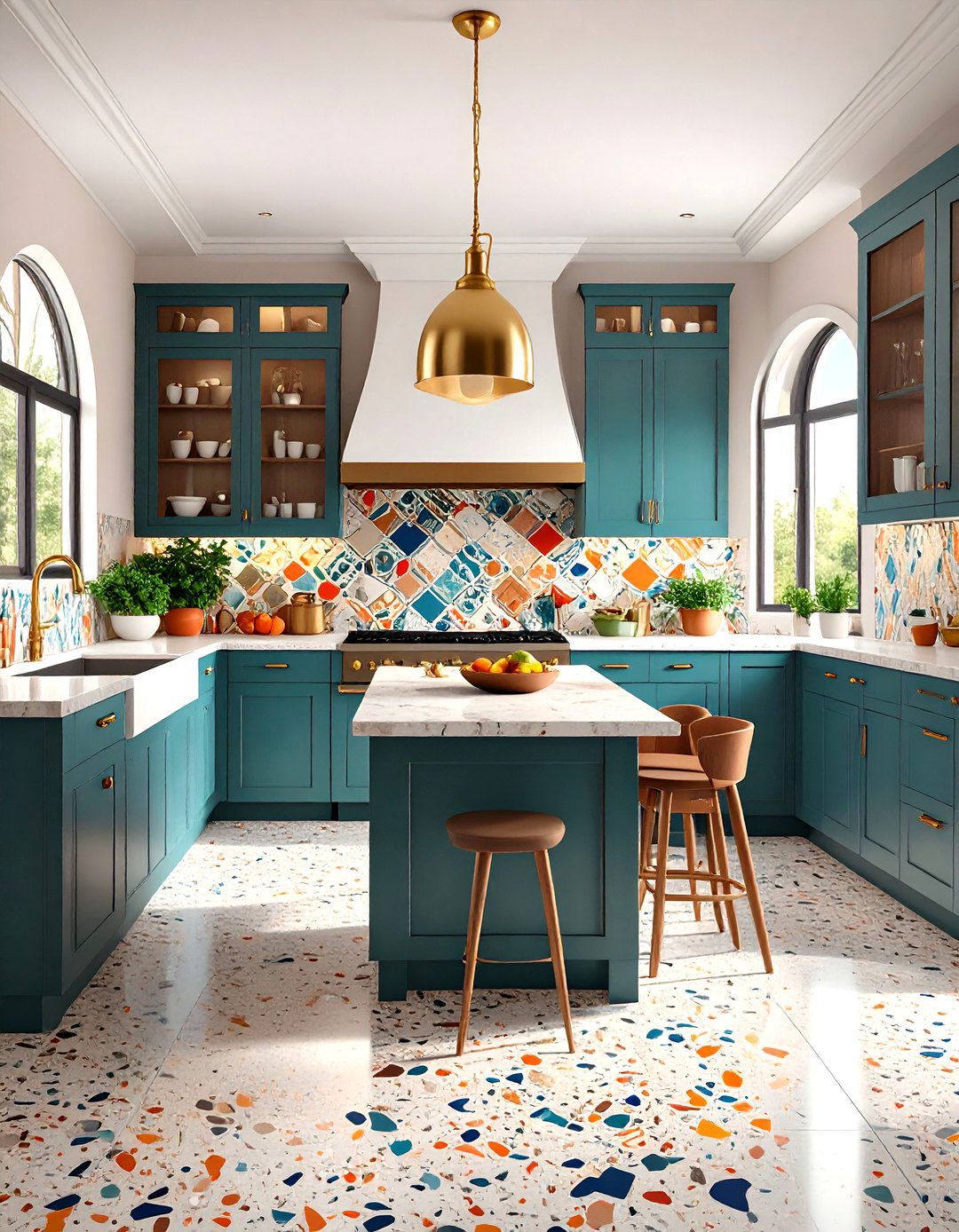
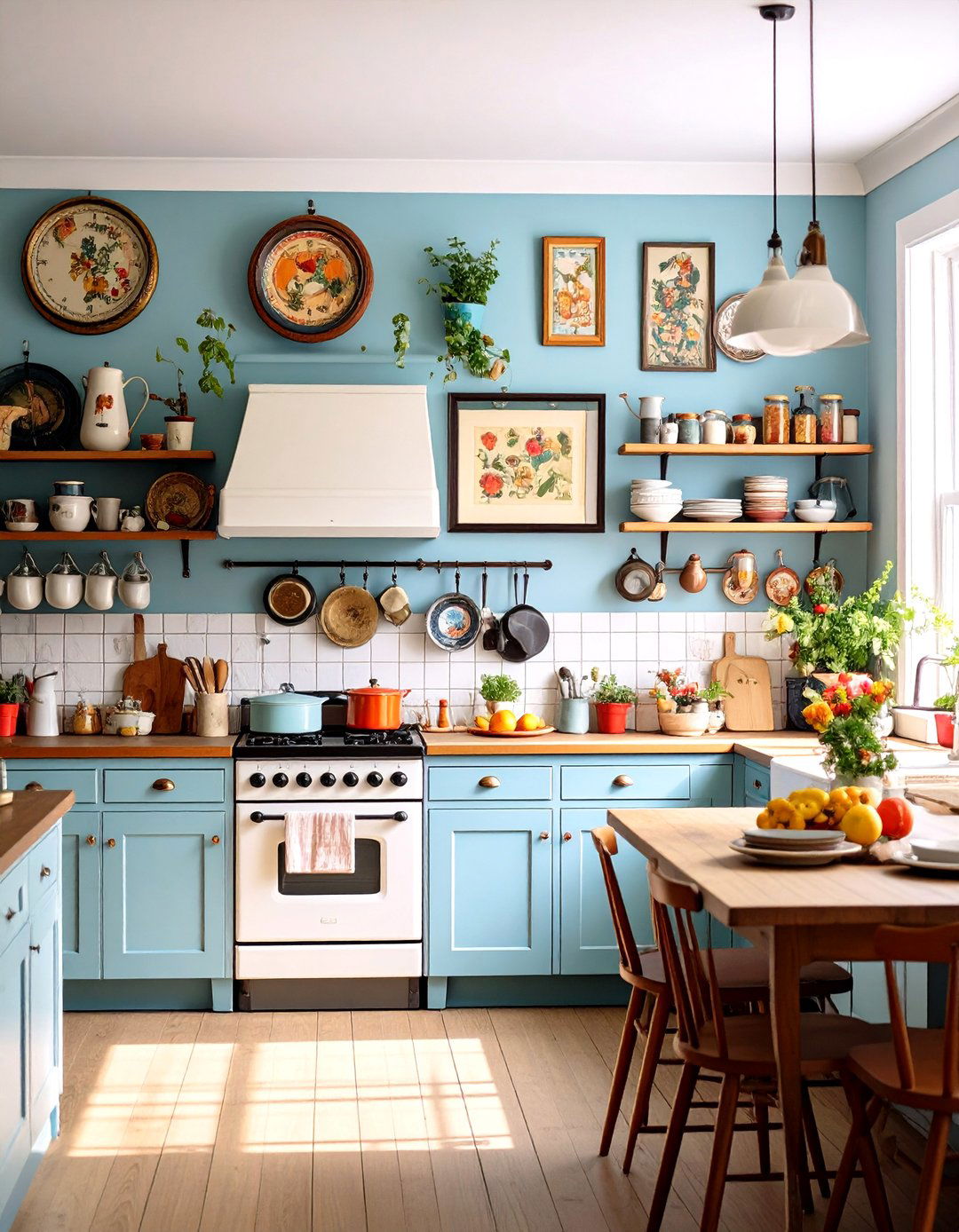

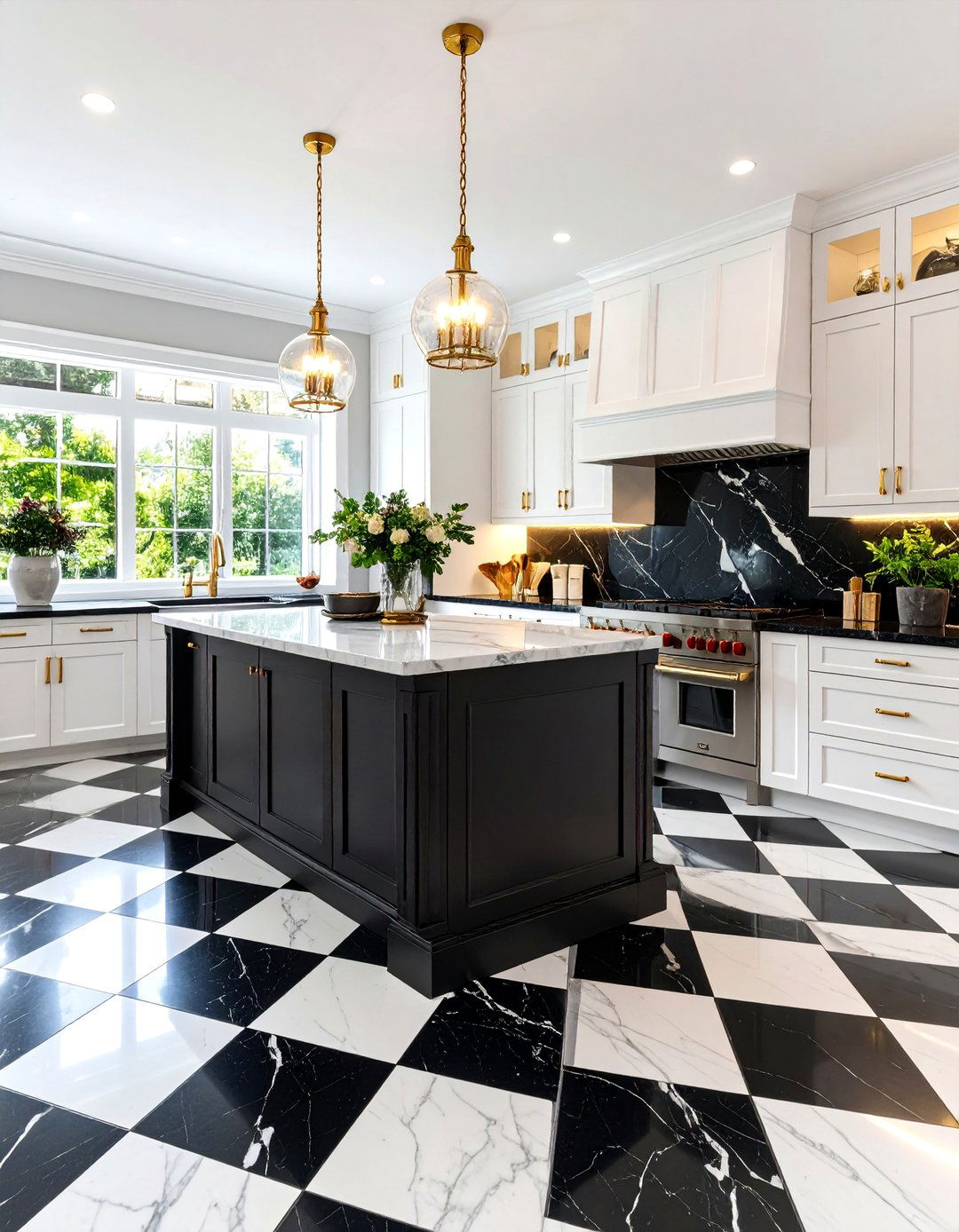
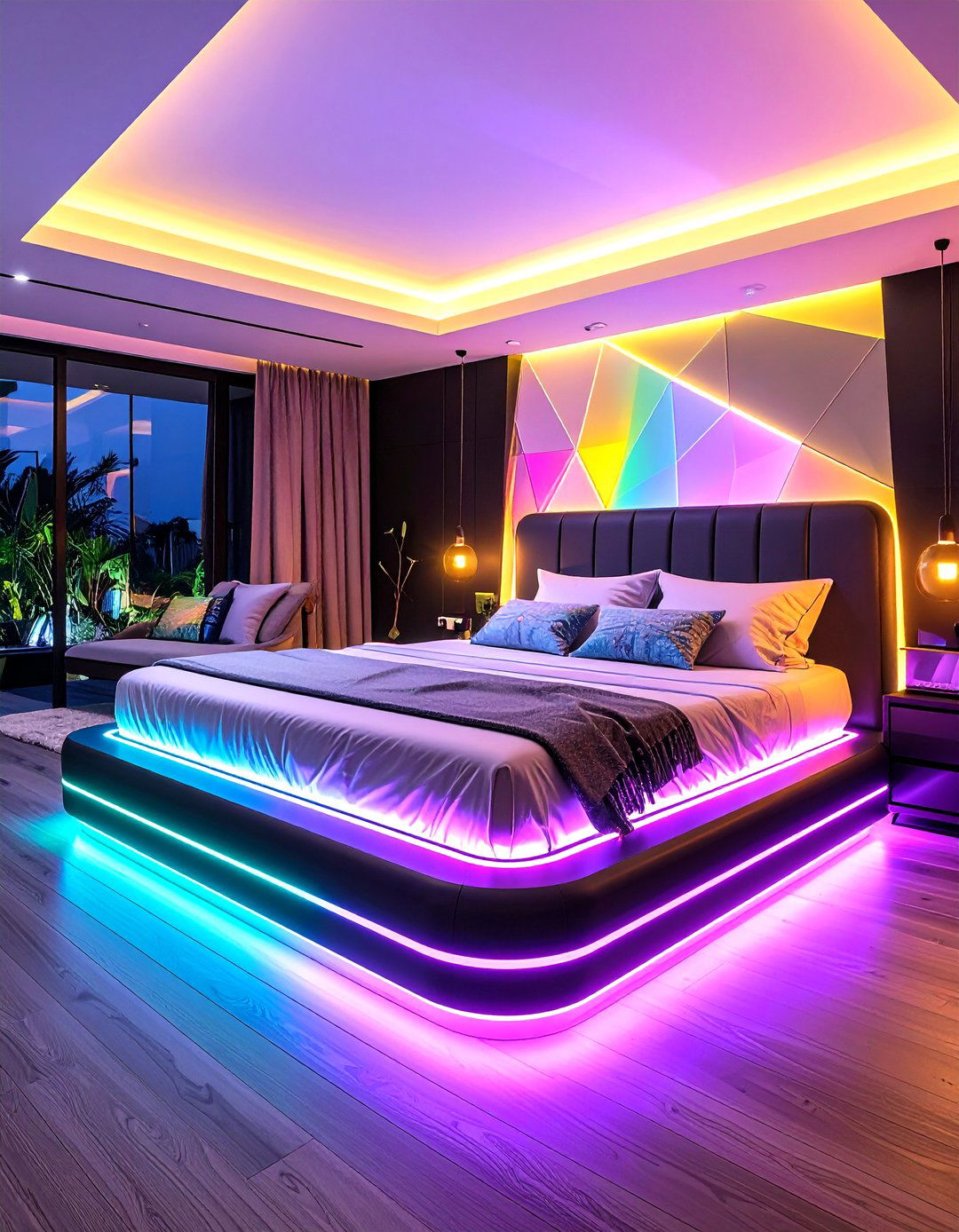
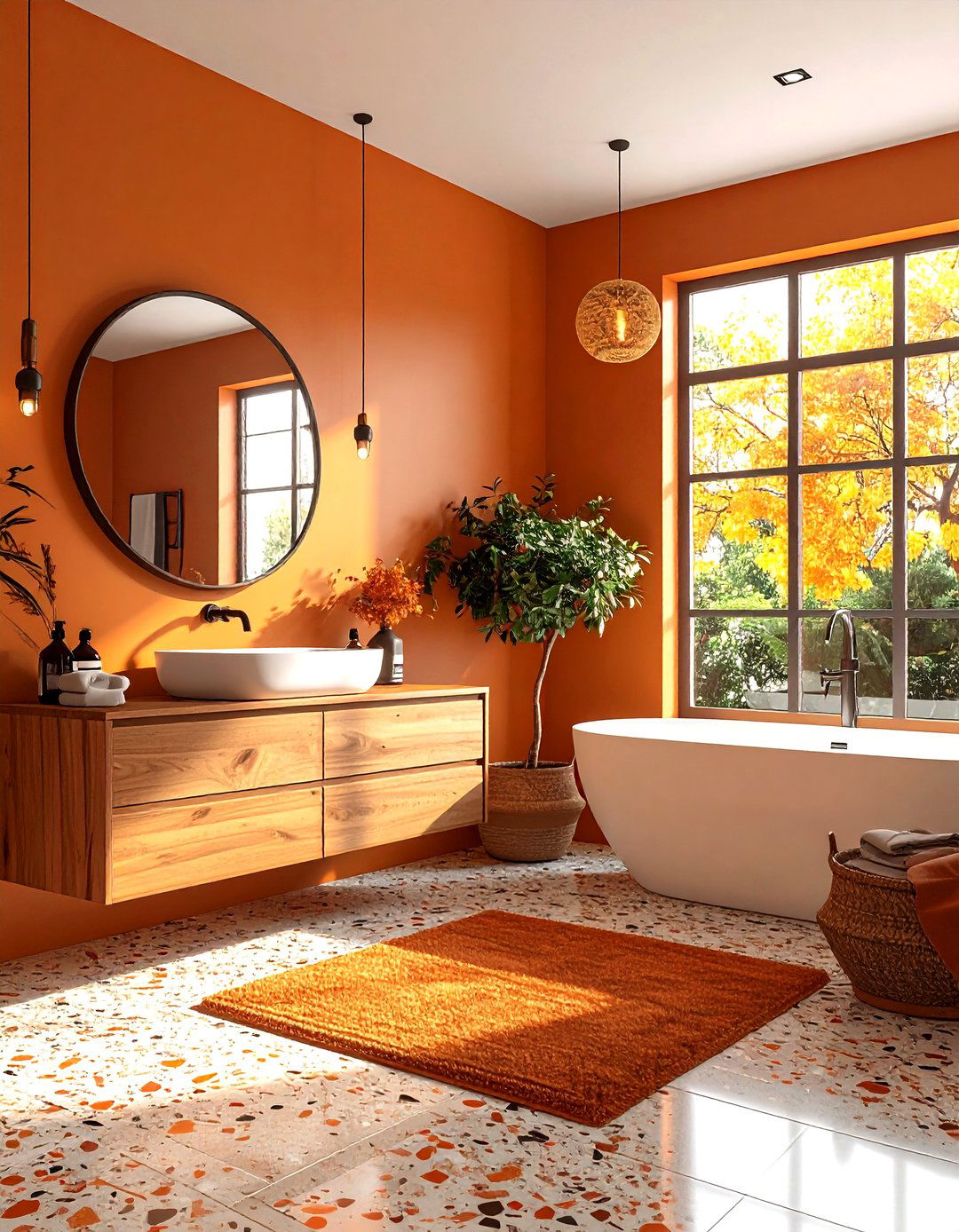
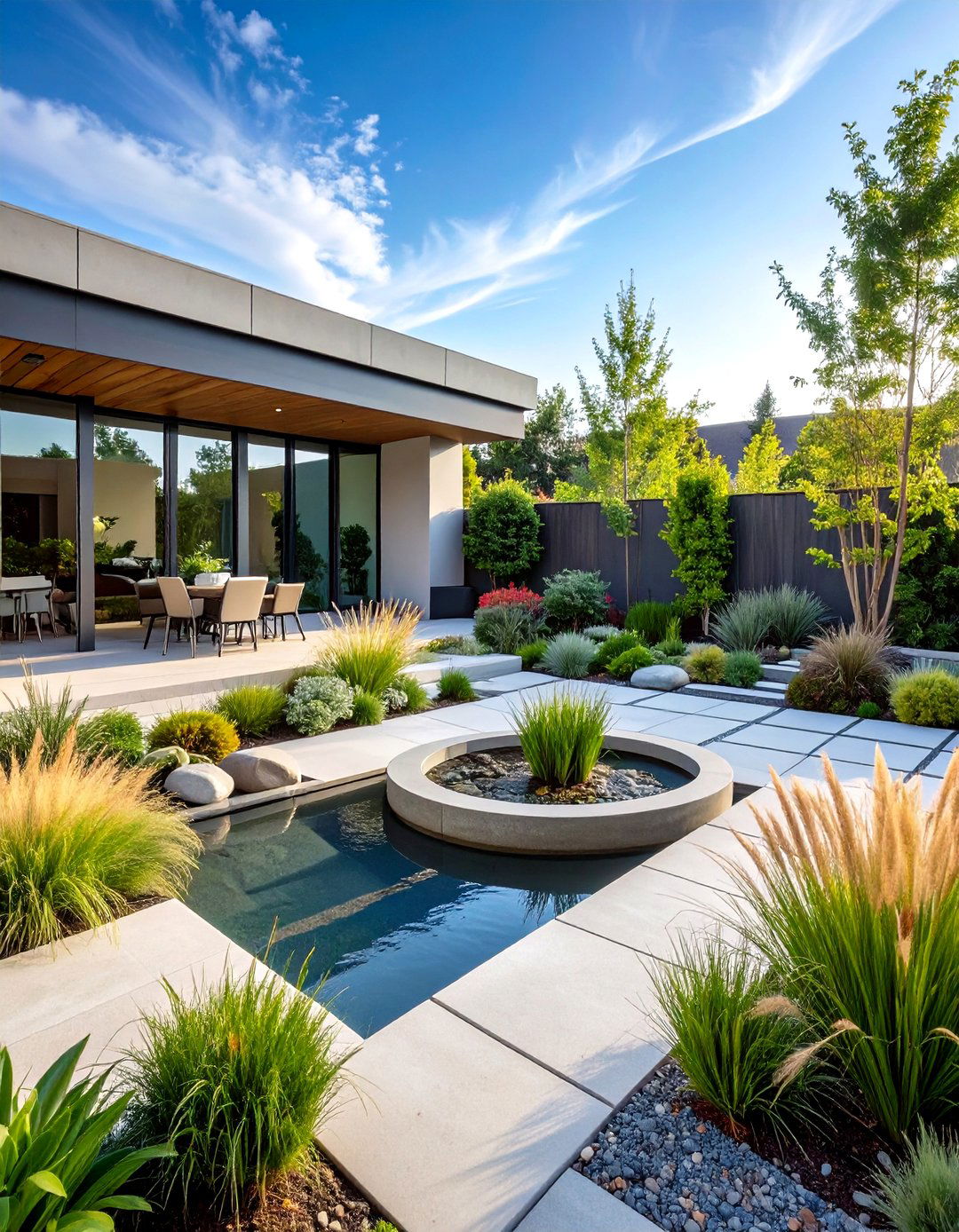
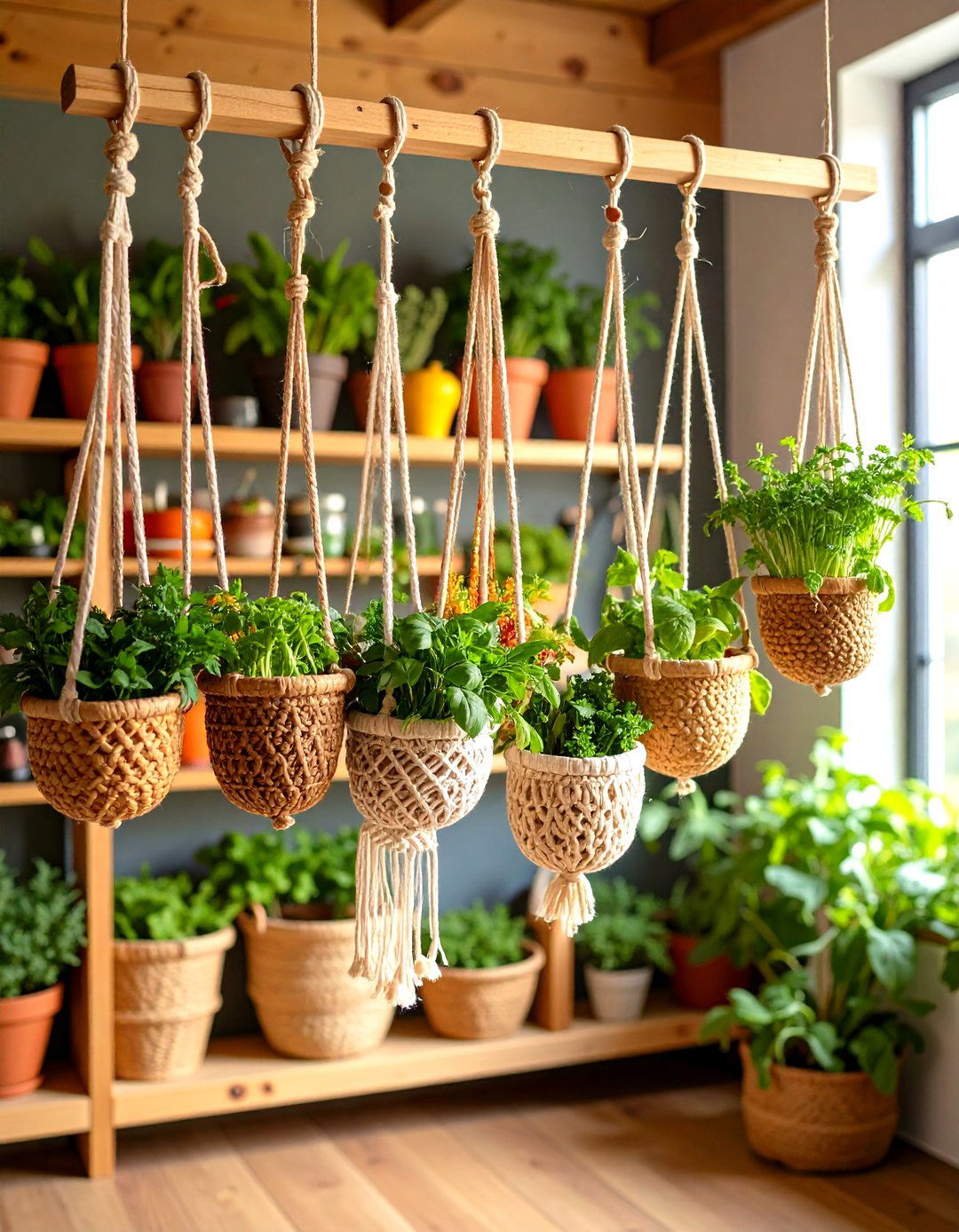
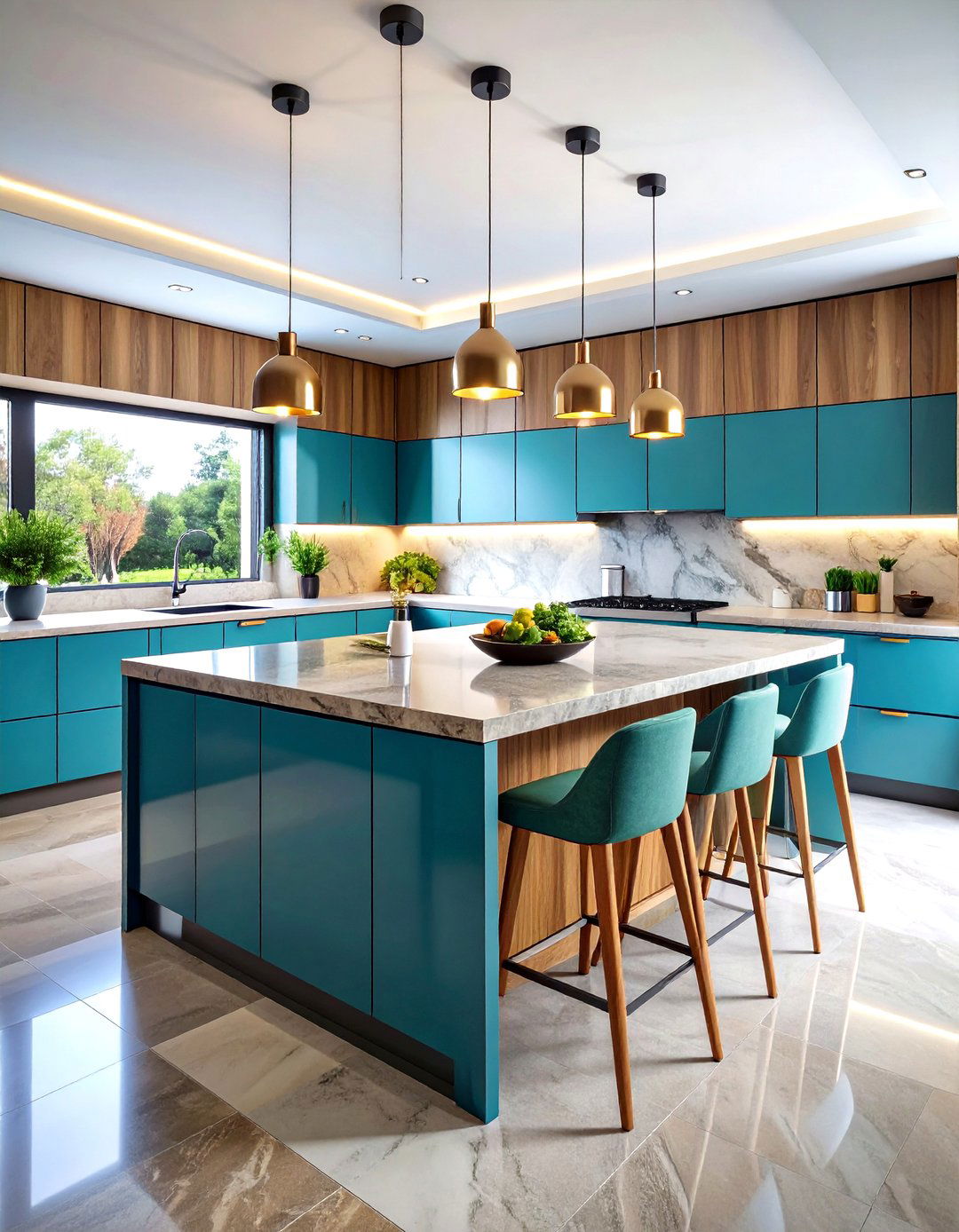
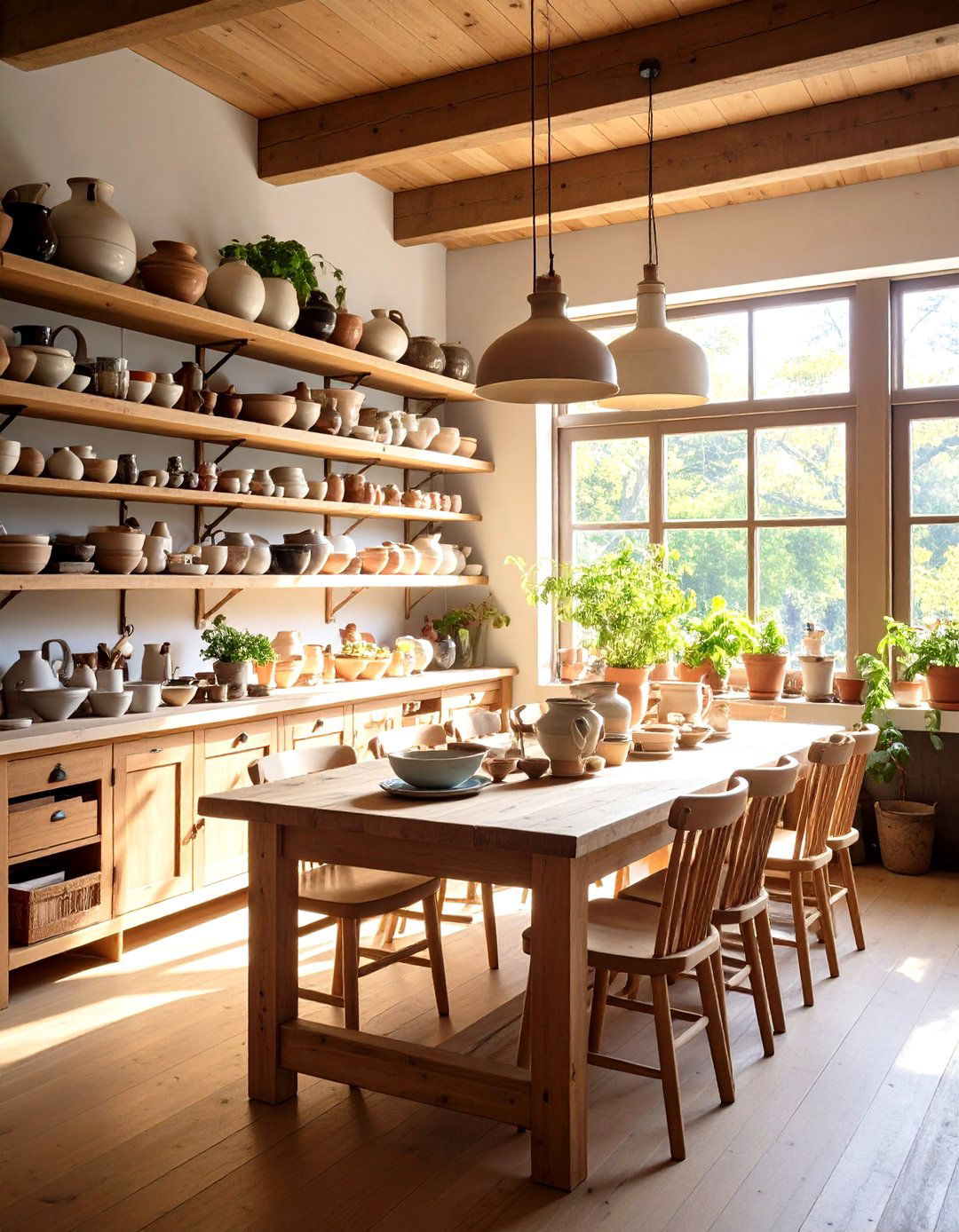

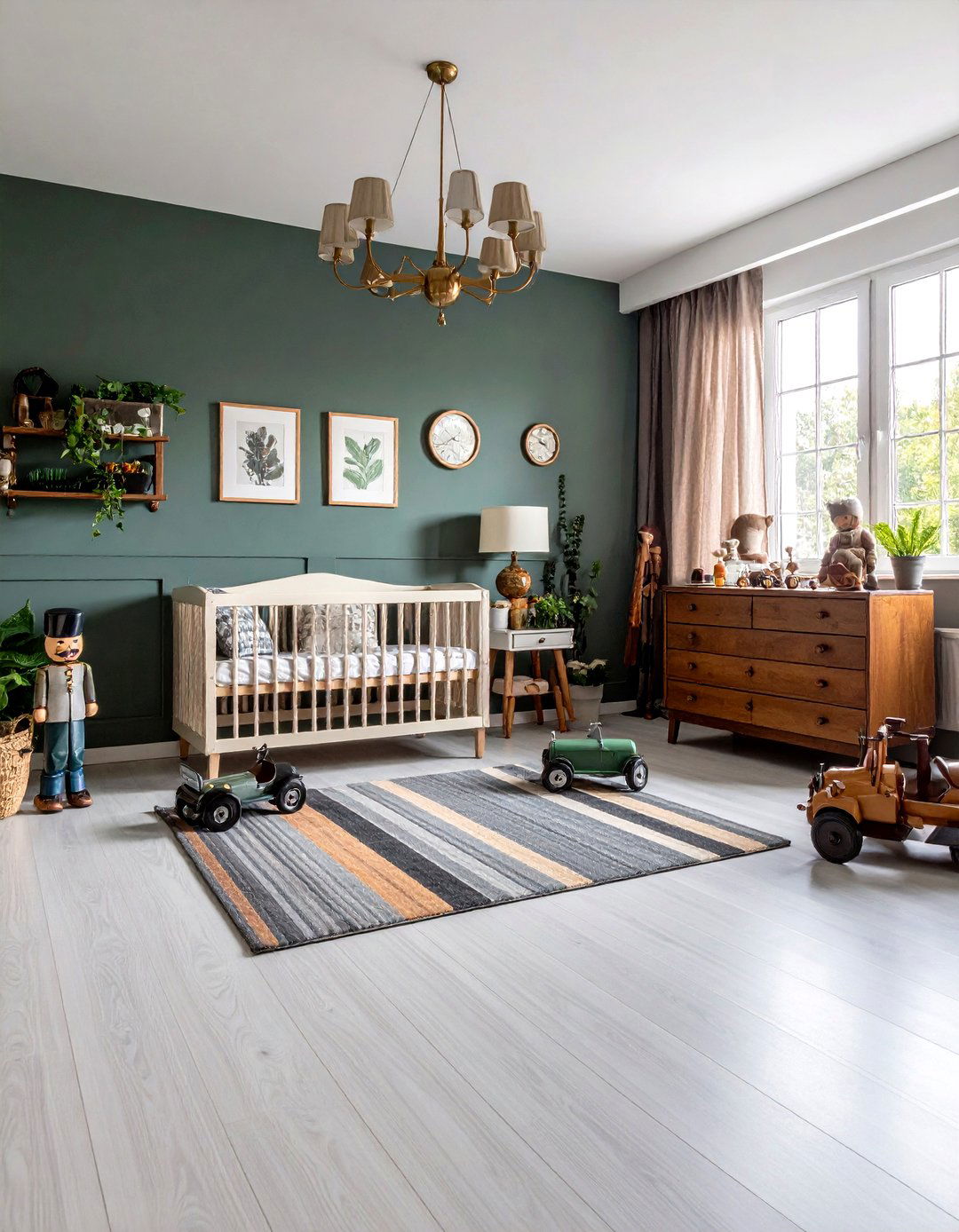
Leave a Reply